|
The beautiful western grey squirrel is a California native tree squirrel species that is very active at my favorite research site, the UC James Reserve in the San Bernardino National Forest in Southern California 🐿🌲. You can learn more about this illusive species in our previous posts on their habitat use and in our squirrel profiles! One of many super interesting facts about these fluffy tailed cuties is that they do not hibernate over the winter when the mountain is snowy 🏔 During that time there is very little food available in the environment, so in order to survive they have to bury enough food to make it through the season. But how do they decide when to eat an item and when to store it?" When a squirrel finds a food item it can choose to eat it right away or store it by burying it underground to eat later. The burying of items by squirrels for future use is typically called 'caching' by Squirrel Gazers 🐿👀 The decision to eat or cache something is a complex one that is influenced by many different factors including the food item's quality, size, and condition. Check out our post from 2019 to see a little more on some of the assessment behaviors squirrels perform to "quality check" their nuts! 🥜🔍🐿 In this new experiment we are intersted in learning more about how having an audience of other squirrels or birds would impact the decision to eat or store a food item. After all, squirrels are known thieves and burying something while others are around may increase the chance that nut is stolen. To explore more about how the presence of other animals might influence a squirrels preference for eating or storing food, we set out an automated feeding station 🥜🤖 The black and red rectangle you see there is actually a microchip scanner! The squirrels at our field site have been implanted with Passive integrated transponders or "PIT-tags". This is just a science term for saying microchip! These are the same type of microchips we put in our cats and dogs. These tags allow us keep track of the squirrels in our area and identify them when they appear at the feeder. And yes, all our squirrels have names! That is Han Solo there in the photo! 🐿💕 Surrounding the microchip scanner are several cameras that record what the squirrels are doing while at the feeding station. The squirrels are given an important choice at the feeder. |
| California grounds squirrels are super cool for so many reasons! 🐿Here are two of my favorite fun facts about this species: (1.) They are semi-fossorial, this means that they live both above and below ground. (2.) They are ecosystem engineers, this is a special title given to species that make changes to their habitats that can have large impacts on other species. The burrows ground squirrels dig provide homes for lots of other California native wildlife like burrowing owls and rattle snakes. 🦉🐍 |
| Scientists know a lot about how the burrows created by ground squirrels help improve the lives of the other species of mammals, birds, and insects that call these burrows home or use them to find food. However, we know a lot less about what these underground burrow networks look like and if there are differences between how squirrels build and use this secretive space. |
| Over the summer I paired up with expert Squirrel Gazer Dr. Jennifer Smith 🐿👀 to track the underground pathways taken by California ground squirrels using motion sensing collars. Dr. Smith is a professor at Mills College in Oakland, California. She has established a long-term study population of wild ground squirrels at Briones Regional Park. Check out her website to learn more about her amazing squirrel science and team of undergraduate squirrel gazers 🎓🐿! |
We outfitted squirrels with small motion sensing collars that collected data as squirrels moved through their environment.
These collars used accelerometers, magnetometers, and gyroscopes to measure different aspects of a squirrel's motion. These sensors are similar to the ones in our cell phones and smart watches that help us measure how far and fast we have traveled or flip the orientation of our screens when we turn our phone from vertical to horizontal.
These collars used accelerometers, magnetometers, and gyroscopes to measure different aspects of a squirrel's motion. These sensors are similar to the ones in our cell phones and smart watches that help us measure how far and fast we have traveled or flip the orientation of our screens when we turn our phone from vertical to horizontal.
Here is Diva the California ground squirrel modeling her collar for
Dr. Smith during our data collection in July.
Each morning a squirrel would get equipped with a collar and released back into the park. A researcher would then follow the squirrel for 3 hours and record each behavior the squirrel performed! In Squirrel Gazing Science 🐿🔬 this is called a "Focal Follow".
Some observed behaviors included:
Now back in the lab we can use the data collected by the collars and the researchers in the field during the focal follows to build computer models that can use the distance traveled by a squirrel, its speed, and direction to create 3D maps of the underground pathways taken by squirrels!
To find out more about this project check out this super awesome blog post from the
Save the Mount Diablo Foundation! ⛰
Save the Mount Diablo Foundation is an amazing conservation organization whose financial support allowed us to purchase the squirrel monitoring collars.
Save the Mount Diablo Foundation! ⛰
Save the Mount Diablo Foundation is an amazing conservation organization whose financial support allowed us to purchase the squirrel monitoring collars.
When two different species live in the same habitat they often have to compete with one another to gain access to important resources like food 🥜🍄🍩
The need to out-compete others may lead animals to change their behavior in order to obtain more than their neighbors or at the very least what is required to survive.
Over the summer, one of my research assistants and fellow squirrel gazer 🐿👀, Katie Elliot, explored how the California ground squirrel and their pesky neighbors the Stellar's Jay may alter their foraging strategies to outcompete one another at a mutual food source.
The California ground squirrel and Stellar's jay coexist in many mountainous regions of California and have very similar diets, possibly causing rivalry for mutual food sources 🐿🐦
The need to out-compete others may lead animals to change their behavior in order to obtain more than their neighbors or at the very least what is required to survive.
Over the summer, one of my research assistants and fellow squirrel gazer 🐿👀, Katie Elliot, explored how the California ground squirrel and their pesky neighbors the Stellar's Jay may alter their foraging strategies to outcompete one another at a mutual food source.
The California ground squirrel and Stellar's jay coexist in many mountainous regions of California and have very similar diets, possibly causing rivalry for mutual food sources 🐿🐦
For 8 hours a day, for 5 consecutive days, Katie placed out a feeding tray with a variety of food options for squirrels and jays to select from.
A camera placed above the tray allowed Katie to analyze how members of both species used the food source.
A camera placed above the tray allowed Katie to analyze how members of both species used the food source.
By watching all 40 hours of footage in slow motion, Katie was able to record six different variables from the footage:
(1) The species of visitors visiting the tray 🐿🐦
(2) The food item selected by each visitor 🥜🌰
(3) The time of day the visit was made to the tray ☀️🌙
(4) Why the visitor left the tray. Did it become satiated? Or was it kicked out by another animal?
(5) How many other indviduals would a visitor allow to eat at the tray with them? 🐿🐿🐿
(6) Was the visitor aggressive to others? 😡
(1) The species of visitors visiting the tray 🐿🐦
(2) The food item selected by each visitor 🥜🌰
(3) The time of day the visit was made to the tray ☀️🌙
(4) Why the visitor left the tray. Did it become satiated? Or was it kicked out by another animal?
(5) How many other indviduals would a visitor allow to eat at the tray with them? 🐿🐿🐿
(6) Was the visitor aggressive to others? 😡
The results are in!
California ground squirrels and Stellar's jays did compete with one another for the same food items
This graph shows that both squirrels and birds selected relatively the same food items from the feeding tray. Out the of the over 700 visits to the tray that Katie observed there was no clear difference in the favorite food option between the two species.
The squirrels and the birds used different foraging strategies to compete with other animals!
Squirrels Foraged Early and Ate Together
Ground squirrels were more often observed approaching the tray in groups compared to Stellar's Jays who appeared to prefer to arrive at the tray alone.
From this graph we can see that ground squirrels only visited the feeding tray in the morning, while Stellar's Jays stopped by throughout the day.
Stellar's Jays Foraged Alone and Aggressively
Pictured above is a Stellar's jay performing an aggressive display (right) towards another jay that just arrived at the tray (left).
This graph shows thats Stellar's jays aggressively kicked-out or displaced both squirrels and other jays from the tray at higher rates than ground squirrels. Ground squirrels were never observed behaving aggressively towards jays, but on occasion would chase away other squirrels.
Based on these findings, Katie concluded that ground squirrels and Stellar's jays do indeed modify their foraging behavior in order to compete with one another at a shared food source. However, each species used a different strategic approach.
Squirrels would travel in groups and take over the tray in the mornings. Whereas, jays would forage alone throughout the day and behave aggressively towards other animals that approached.
This simple project highlights just a few of the many ways animals adjust to and compete with one another to survive.
To learn more about Katie Elliot check out her profile HERE.
Katie became a member of the Squirrel Gazer Team through the Community College Field Biology Alliance, a 9-month intensive research program at UCLA that connects community college students with research opportunities in field biology.
If you or anyone you know is a community college student in the greater Los Angeles area interested in research, please visit or share the website posted below! Applications for the 2020 program are open until February 1st!
https://communitycollegefieldbiologyalliance.weebly.com/
Squirrels would travel in groups and take over the tray in the mornings. Whereas, jays would forage alone throughout the day and behave aggressively towards other animals that approached.
This simple project highlights just a few of the many ways animals adjust to and compete with one another to survive.
To learn more about Katie Elliot check out her profile HERE.
Katie became a member of the Squirrel Gazer Team through the Community College Field Biology Alliance, a 9-month intensive research program at UCLA that connects community college students with research opportunities in field biology.
If you or anyone you know is a community college student in the greater Los Angeles area interested in research, please visit or share the website posted below! Applications for the 2020 program are open until February 1st!
https://communitycollegefieldbiologyalliance.weebly.com/
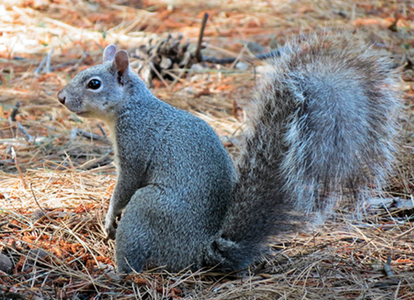 Photo from U.S. Fish and Wildlife Service (fws.gov)
Photo from U.S. Fish and Wildlife Service (fws.gov) The Western grey squirrel (Sciurus griseus) is the largest tree squirrel native to the western United States! 🐿🌲 These silver-tailed beauties provide an important service to the forests by helping to plant trees and maintain healthy mushroom communities by burying acorns and dispersing fungus along the forest floor. 🌰🍄
Once incredibly abundant throughout California and Washington, their populations are declining. In 1993 the Washington State Department of Fish and Wildlife listed them as a threatened species [1]. In California the western grey squirrel has been pushed to more rural areas at higher elevations.
One reason why the western grey squirrel is struggling is habitat loss [2]. This species of squirrel is very picky when it comes to were to live. Western greys rely on mature forests with an abundance of oak 🌳 and pine 🌲trees in order to build nests, find proper food, and escape from predators effectively.
The number and size of mature oakwood lands is decreasing as cities expand and the need for preventative wildfire suppression increases. Gaining a deeper understanding of how western grey squirrels utilize the forest to survive can help us better protect the remaining populations.
Once incredibly abundant throughout California and Washington, their populations are declining. In 1993 the Washington State Department of Fish and Wildlife listed them as a threatened species [1]. In California the western grey squirrel has been pushed to more rural areas at higher elevations.
One reason why the western grey squirrel is struggling is habitat loss [2]. This species of squirrel is very picky when it comes to were to live. Western greys rely on mature forests with an abundance of oak 🌳 and pine 🌲trees in order to build nests, find proper food, and escape from predators effectively.
The number and size of mature oakwood lands is decreasing as cities expand and the need for preventative wildfire suppression increases. Gaining a deeper understanding of how western grey squirrels utilize the forest to survive can help us better protect the remaining populations.
Two 'must-haves' for western grey squirrel habitat
1. High Canopy Connectivity
2. Oak Trees for Nesting
Western grey squirrels prefer to use oak trees to build their nests. 🌳 Mother squirrels will use cavities in these trees to raise their babies. The cavities provide warmth and protection for their young and are more stable than nests made out of leaves or sticks. Without cavities squirrels will build nests also called dreys out of leaves and sticks. Greys also prefer to select oak trees for nesting that contain mistletoe [3]. Mistletoe brooms are used as a part of the nest structure providing support for the interior leaves and cushion.
What can we do to help the western grey squirrel?
To keep the remaining western grey squirrel populations thriving we need to work together to maintain oak woodlands and encourage their restoration [4]. The forestry service and conservation groups in Washington and Oregon are utilizing data from ecological research on the land use and activity patterns of this species to aid in managing oakwood lands in ways that will promote grey squirrel populations. The more we can learn about what a healthy population of western grey squirrels needs to survive and thrive the more informed our decisions about city planning, land management, and fire suppression can be and the happier the western grey squirrel will be. 🐿💕🌳
Citations: [1] Chris 1981 USDA General technical report PNW no. 133. [2] King 2014 Doctoral dissertation, UCLA. [3] Gregory et. al. 2010 The Journal of Wildlife Management, 74(1), 18-25. [4] oregonconservationstrategy.com
The feeling of frustration is something we can all relate to. From small daily inconveniences like the grocery store not having your favorite flavor of ice cream to larger dilemmas such as your car not starting in the morning.
In the dictionary frustration is defined as "the feeling of being upset or annoyed, especially because of inability to change or achieve something." In psychology frustration is often discussed as a feeling or reaction that occurs when you do not get what you expect.
There is new research showing that squirrels can empathize with us when it comes to feeling frustrated! However, their expression of frustration just looks a little different (arguably more adorable).
In the dictionary frustration is defined as "the feeling of being upset or annoyed, especially because of inability to change or achieve something." In psychology frustration is often discussed as a feeling or reaction that occurs when you do not get what you expect.
There is new research showing that squirrels can empathize with us when it comes to feeling frustrated! However, their expression of frustration just looks a little different (arguably more adorable).
Recognizing emotions in humans is much easier than in other animals such as squirrels. Humans can express themselves with words or nonverbally with facial expressions. Humans are experts at decoding the non-verbal cues depicted in the human face (1). Even small children have been shown to have the ability to accurately label anger, sadness, and happiness just by looking at peoples eyes (2).
Try it out: Can you guess what emotion this is?
If you said anger you are correct!
Deciphering non-human animal emotions is more difficult. Squirrels for example do not express themselves with their faces. This makes them great potential poker players, but also hard to read when it comes to figuring out how they are feeling.
Just because we do not see frustration on a squirrel's face does not mean they do not feel that emotion! Squirrel Gazers 🐿👀just have to pay close attention to other features to find it!
During her time as a doctoral student at UC Berkeley, Dr. Mikel Delgado, trained free living squirrels on campus to open small boxes to retrieve a walnut. As we know from August's post investigating the favorite foods of fox squirrels, walnuts are a much preferred snack compared to other nuts and seeds.
Deciphering non-human animal emotions is more difficult. Squirrels for example do not express themselves with their faces. This makes them great potential poker players, but also hard to read when it comes to figuring out how they are feeling.
Just because we do not see frustration on a squirrel's face does not mean they do not feel that emotion! Squirrel Gazers 🐿👀just have to pay close attention to other features to find it!
During her time as a doctoral student at UC Berkeley, Dr. Mikel Delgado, trained free living squirrels on campus to open small boxes to retrieve a walnut. As we know from August's post investigating the favorite foods of fox squirrels, walnuts are a much preferred snack compared to other nuts and seeds.
Once squirrels came to expect walnuts from the small boxes, Delgado began to play tricks on them.
First, she replaced the walnuts in the boxes with corn. In human terms, this is like being promised a donut 🍩 and being served broccoli 🥦. You might eat the broccoli, but it is not the same as what you were promised!
Next, she locked some of the boxes so that squirrels could no longer open them 🔒. Anyone who has ever forgotten the password to their email account and continuously tried to sign in can relate to how this made the squirrels feel.
First, she replaced the walnuts in the boxes with corn. In human terms, this is like being promised a donut 🍩 and being served broccoli 🥦. You might eat the broccoli, but it is not the same as what you were promised!
Next, she locked some of the boxes so that squirrels could no longer open them 🔒. Anyone who has ever forgotten the password to their email account and continuously tried to sign in can relate to how this made the squirrels feel.
(Delgado noticed that when the squirrels approached the box and did not get the walnut they were expecting they began to behave strangely. Squirrels who opened a box to find corn or came across a box that was locked would flag their tails and at times attack the box.
As mentioned earlier, frustration is often defined as not getting what you expect from a particular situation. Squirrels who opened boxes to find corn or were given a locked box flagged their tails significantly more than those who were only given boxes containing walnuts. This leads researchers to believe tail flagging in the fox squirrel may be an expression of frustration!
Aggression is another big sign of frustration, which explains why many of the squirrels given locked boxes actually attacked the box by biting and dragging it (3).
The take away here is that humans are not the only animals who feel and express emotions like frustration. Yet, often animal emotions can go unnoticed or misread because they do not always look the same as ours do. Humans have evolved to be expert face readers, but before now we lacked the ability to read the tail flag!
Curious to see what a frustrated squirrel looks like and learn more about Delgado's study? Check out the video below to see KQED's awesome coverage!
As mentioned earlier, frustration is often defined as not getting what you expect from a particular situation. Squirrels who opened boxes to find corn or were given a locked box flagged their tails significantly more than those who were only given boxes containing walnuts. This leads researchers to believe tail flagging in the fox squirrel may be an expression of frustration!
Aggression is another big sign of frustration, which explains why many of the squirrels given locked boxes actually attacked the box by biting and dragging it (3).
The take away here is that humans are not the only animals who feel and express emotions like frustration. Yet, often animal emotions can go unnoticed or misread because they do not always look the same as ours do. Humans have evolved to be expert face readers, but before now we lacked the ability to read the tail flag!
Curious to see what a frustrated squirrel looks like and learn more about Delgado's study? Check out the video below to see KQED's awesome coverage!
(1) (Izard, 1971); (2) (Guarnera, Hichy, Cascio,& Currubbac, 2015);
(3)https://www.kqed.org/science/993143/watch-these-frustrated-squirrels-go-nuts
(3)https://www.kqed.org/science/993143/watch-these-frustrated-squirrels-go-nuts
For many of us on the West Coast of North America the existence of a white squirrel is difficult to imagine, but it is not as uncommon as you may think! Populations of white squirrels can be found in places across the United States and sightings of these mystical creatures are becoming more common. 🦄🐿👀
The white squirrels we see in North America are the result of various rare genetic variants or mutations. However, in Thailand and other parts of East Asia there is a sub-species of tree squirrel, the Finlayson's squirrel (Callosciurus finlaysonii), in which a white coat is characteristic of the species. White coats may be common place amongst this group, but broadly speaking it is still a vary rare squirrel color. There are over 200 species of squirrels and only one subspecies is found to have white as a primary color morph! 🌈🐿
There are two primary forms of white squirrels in the United States- albino squirrels and a rare morph of the eastern grey squirrel.
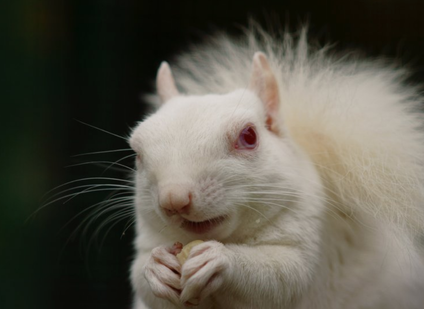
The easiest way to know if the white squirrel you spotted is albino or a rare morph is by its eye color. Albino squirrels are completely white with red or pink eyes. This unique eye color is found in all albino animals and is a result of a lack of melanin pigments that produce eye and coat color. Albinism is a genetic condition caused by a recessive gene. This means that both the mom and dad squirrel have to be carriers of this gene in order to produce albino offspring. This is what makes it so rare! It is estimated that 20-30% of white squirrels in North America are albino.
The rare white morph of the eastern grey squirrel has black eyes and can have a mix of white and grey coat. Similar to albino squirrels, white eastern grey squirrels owe their unique coat color to their genes. But, unlike albino squirrels who have a mutation on the gene coding for pigmentation, western grey squirrels actually have a gene that codes for a white coat! Despite having this 'white coat' gene, it still only occurs very rarely because being so brightly colored makes a squirrel less able to blend in amongst the trees and thus more visible to predators.
Here are some examples of the diversity seen amongst white morph squirrels:
Here are some examples of the diversity seen amongst white morph squirrels:
Squirrels that are white due to this white coat color gene are more common than albino squirrels and account for roughly 70% of the white squirrel population in the United States.
Lastly, if you know me you know I have a special affinity for the eastern fox squirrel. 🐿💕💁🏻♀️ White coat color has also been spotted in these guys. However, fox squirrels do not have the gene that western grey squirrels have that codes for a white coat. White eastern fox squirrels occur due to a condition called leucism. Unlike the mutation that causes albinism which prevents the production of melanin, leucism is caused by a decrease in several different types of pigments. Fox squirrels with leucism will not have pink or red eyes but may have patches of white or pale fur.
Take a look! 👀
Lastly, if you know me you know I have a special affinity for the eastern fox squirrel. 🐿💕💁🏻♀️ White coat color has also been spotted in these guys. However, fox squirrels do not have the gene that western grey squirrels have that codes for a white coat. White eastern fox squirrels occur due to a condition called leucism. Unlike the mutation that causes albinism which prevents the production of melanin, leucism is caused by a decrease in several different types of pigments. Fox squirrels with leucism will not have pink or red eyes but may have patches of white or pale fur.
Take a look! 👀
Where can you see a white squirrel? 🐿👀
Catching sight of these rare variations of squirrels is tough unless you know where to find them. There are five main cities that claim to be the official ‘home of the white squirrel’.
1. Olney, Illinois
2. Marionville, Missouri
3. Brevard, North Carolina
4. Exeter, Ontario Canada
5. Kenton, Tennessee
Traveling to one of these locations will greatly increase the success of your white squirrel sighting adventure!
Below is map of sightings in the United States created by researcher Rob Nelson and Roland Kays a zoologist at North Carolina State University. You can help them keep track of white squirrel populations by logging your sightings!
Want to learn more about white squirrels? Check out this video from the awesome biologists at Untamed Science and their white squirrel sighting adventure across the Eastern United States!
Today's contribution to Squirrel Gazer was a collaborative effort between by Cynthia Frausto and Amanda Robin
Notable sources:
https://www.washingtonpost.com/local/ever-seen-a-white-squirrel-meet-the-guy-whos-keeping-tabs-on-them-nationwide/2019/04/14/c38e4822-5c7e-11e9-9625-01d48d50ef75_story.html?noredirect=on&utm_term=.b7e7f9950254
https://www.untamedscience.com/biodiversity/white-squirrel/
https://www.austin360.com/entertainment/20161006/meet-central-texas-squirrels
Yesterday, I woke up to a panicked phone call from my friend Lisette. A young squirrel had fallen from a tree in her yard and was yelping loudly and appeared unable to move. She wanted to know how she could help the little guy. Here is a video she took of the squirrel she found who we named Petrie.
Finding hurt squirrels 🤕🐿, especially babies, is pretty common this time of year. What should you do if you come across as squirrel who appears to be in need of some emergency assistance 🚑?
Interfering with wildlife is risky business and there are a lot of different opinions about what should be done. I am not an expert in this area nor am I a wildlife rehabilitator, but my work with wild squirrels has led me to often get contacted by caring individuals who come across squirrels in need of help. I have tried my best to consolidate some information to help clarify steps that can be taken to care for injured wild squirrels but, this is by no means the right advice for every situation.
Interfering with wildlife is risky business and there are a lot of different opinions about what should be done. I am not an expert in this area nor am I a wildlife rehabilitator, but my work with wild squirrels has led me to often get contacted by caring individuals who come across squirrels in need of help. I have tried my best to consolidate some information to help clarify steps that can be taken to care for injured wild squirrels but, this is by no means the right advice for every situation.
First, Make Sure the Squirrel Really Needs Your Help.
This may sound obvious, but we humans have a tendency to jump into action for an animal sometimes a little too quickly. Just like human children, young animals sometime stumble around while exploring the world.
To asses if a wild animal is in need of human interference the Human Society recommends you check for the following signs:
To asses if a wild animal is in need of human interference the Human Society recommends you check for the following signs:
- Did you see a dog or cat harassing the animal? 🐶🐱
- Is the animal bleeding?
- Are there any obviously broken limbs?
- Has the animal been crying for a long time? 😭
- Do you see a dead parent near by?
- Is the animal shivering? 🥶
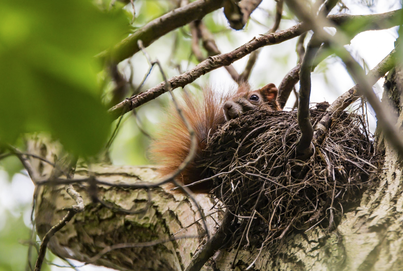
There are also some SQUIRREL SPECIFIC SIGNS to look out for.
- - A baby squirrel that has fallen from a tree.
- - A nest that has fallen from a tree
- - A tree has fallen and a nest is still intact.
-
If the answer to any one of these questions is yes than the squirrel 🐿could probably use some human help! In the case of Petrie, several of these signs were evident. Petrie had small amounts of blood around his mouth and what appeared to be a broken or dislocated hip. He also had been crying on the ground for an extended period of time. On top of all of this my friend reported that there was a tree trimming crew 🌲 outside the apartment complex today, so it is very possible this little dude took a very long fall.
What to do if the squirrel you found checks off all the boxes above:
In my experience, government animal control agencies are pretty reluctant to come out to pick up an injured squirrel. If the squirrel you found is in need of medical care your may have to find a near by wildlife rehabilitation center to take it to.
An easy way to find your nearest rehabilitation center is to use the Human Society's directory that is organized by state. You can access this at their website: www.humanesociety.org/resources/how-find-wildlife-rehabilitator. If you are unable to find a suitable location to take your hurt squirrel from the website above, a quick google search for "wildlife rehabilitation" with your area code included will usually turn up some helpful results.
In the case of Petrie, a quick search for rehabs in Santa Ana, California quickly turned up the Wetlands and Wildlife Care Center of Orange County. They are an amazing organization that helps thousands of animals every year. Their website listed that they accepted squirrels along with specific hours of animal intake. Lisette was able to safety transport little Petrie over to the Wetlands and Wildlife Care Center of Orange County were they promptly accepted him and began to provide medical care.
Things to think about before transporting a wild squirrel on your own.
Squirrels even babies can have powerful teeth, sharp claws, and may carry a variety of diseases. It is important to consider your safety before transporting the animal on your own. Use the strongest pair of gloves possible when picking up the animal. In the case of Petrie, Lisette used a pair of heavy duty oven mitts.🧤 Place the squirrel in a cardboard box with a warm blanket, hat, or scarf beneath it. If possible use a box 📦that has a lid, a small dark space will provide the stressed animal with some comfort. Make sure there are air holes in the lid first!
If you already found a wildlife rehab center that will take the squirrel, but feel uncomfortable transporting the animal yourself call your local animal control or police department and ask if they can move it for you.
If you already found a wildlife rehab center that will take the squirrel, but feel uncomfortable transporting the animal yourself call your local animal control or police department and ask if they can move it for you.
What if the baby squirrel does not check off the criteria for immediate intervention?
| Along with finding Petry, Lisette found a second baby squirrel in her yard who she named Ducky. Ducky did not appear to have any obvious bone injuries and was not bleeding or crying. As Lisette approached Ducky he began to move on his own. If you come across a baby squirrel like Ducky who does not appear to need immediate medical care the best option is leave the squirrel where you found it. Keep people and pets away from the area for a day and give the mother squirrel a chance to come back and relocate her baby. 🐿💕👼 If it is very cold outside it may be a good idea to place the baby on a blanket. If by the end of the day the mother has not come back it may be time to bring the baby squirrel to a rehabilitation center as it will likely not survive the night outside on the ground alone. |
LUCKY FOR DUCKY HIS MOM CAME BACK FOR HIM!!!
By the end of the day Lisette did the best thing she could do for both Petrie and Ducky. Petrie got access to the emergency medical care he needed and Ducky was reunited with his mom.
Still unsure what do about a baby squirrel you found? Here is a useful info graphic from the Wildlife Center of Virginia to help you decide on the best course of action.
Today is Ground hog day! A magical day were we the people of the United States and Canada turn to ground hogs to help us predict the seasons. 🇺🇸🇨🇦It all started with a Pennsylvania Dutch superstition that if a ground hog came out of its burrow, saw its own shadow, and retreated back underground winter would continue on for another six long weeks. If however, there was enough cloud cover so that the emerging ground hog did not flee from his own shadow spring would be arriving early. 🌻🌸🐌
Today the most famous weather predicting ground hog, Punxsutawney Phil has declared an early spring for 2019! Don't put a way your winter coats just yet though. ❄️🌧☃️ According to CCN and the National Oceanic and Atmospheric Administration, Phil has only been correct in about 40% of his 130 weather predictions. 🔮
Why are we talking about ground hogs on a website about squirrels?
Ground hogs like Phil also called wood chucks and ground pigs are a type of large ground squirrel known as a marmot, in this case specifically Marmota monax! 🐿💕 Thats right! Just like my beloved eastern fox squirrels marmots are in the scientific family known as Sciuridae!
Marmots can be found all over the world just like squirrels! Ground hogs like Phil (Marmota monax) can be found all over North America primarily in woodlands in the North East United States and all throughout Canada. Unlike many tree squirrels 🌲🐿 marmots, similar to a lot of other ground squirrels, hibernate in underground burrows to survive the winter ❄️💤.
Marmots can be found all over the world just like squirrels! Ground hogs like Phil (Marmota monax) can be found all over North America primarily in woodlands in the North East United States and all throughout Canada. Unlike many tree squirrels 🌲🐿 marmots, similar to a lot of other ground squirrels, hibernate in underground burrows to survive the winter ❄️💤.
Here I submit to you some circumstantial evidence demonstrating the family resemblance between some familiar Squirrel Gazer squirrel species and ground hogs.
The Gummy Bear Pose
If you follow Squirrel Gazer on Instagram you know one of my favorite squirrel postures is what I like to call the gummy bear pose 🐻. It always looks like they need to ask you a really important question when they do that and who doesn't want to answer a question from a squirrel?!
Pancake Pose
Both eastern fox squirrels and alpine marmots enjoy a unique personal air conditioning system 🌬🐿. These Sciuridae family members often can be seen in the summer months in what I call the pancake pose. By flatting their bodies and spreading out their limbs on a rock or log these guys can cool themselves down after a long morning conducting important of squirrel business.
Familiar mannerisms aside we can use the scientific classification system to understand how ground hogs and squirrels are related.
In a nutshell, all living things are classified in an eight layer system to help scientists identify important information about them. One important layer of this system is called the family. Organisms that share the same family evolved from the same ancestors and because of that tend to share a lot of similar attributes.
Here are the full scientific classifications for fox squirrels and ground hogs. Can you see the similarities?
Here are the full scientific classifications for fox squirrels and ground hogs. Can you see the similarities?
Here is a video of Phil making his prediction this morning... but really watch this video it may be the strangest and most entertaining thing I have seen.
Today is Squirrel Appreciation Day! 🐿💕With over 200 species all possessing their own unique squirrel super powers, there is defiantly a lot to appreciate and learn about these cute and sometimes mischievous rodents.
Digital editor Katherine Wu at PBS NOVA interviewed me and other professional squirrel gazers 🐿👀 to narrow down 6 reasons we should all be in awe of these often underestimated rodents.
Check out the article here: www.pbs.org/wgbh/nova/article/six-snippets-squirrel-science
Digital editor Katherine Wu at PBS NOVA interviewed me and other professional squirrel gazers 🐿👀 to narrow down 6 reasons we should all be in awe of these often underestimated rodents.
Check out the article here: www.pbs.org/wgbh/nova/article/six-snippets-squirrel-science
Proudly powered by Weebly

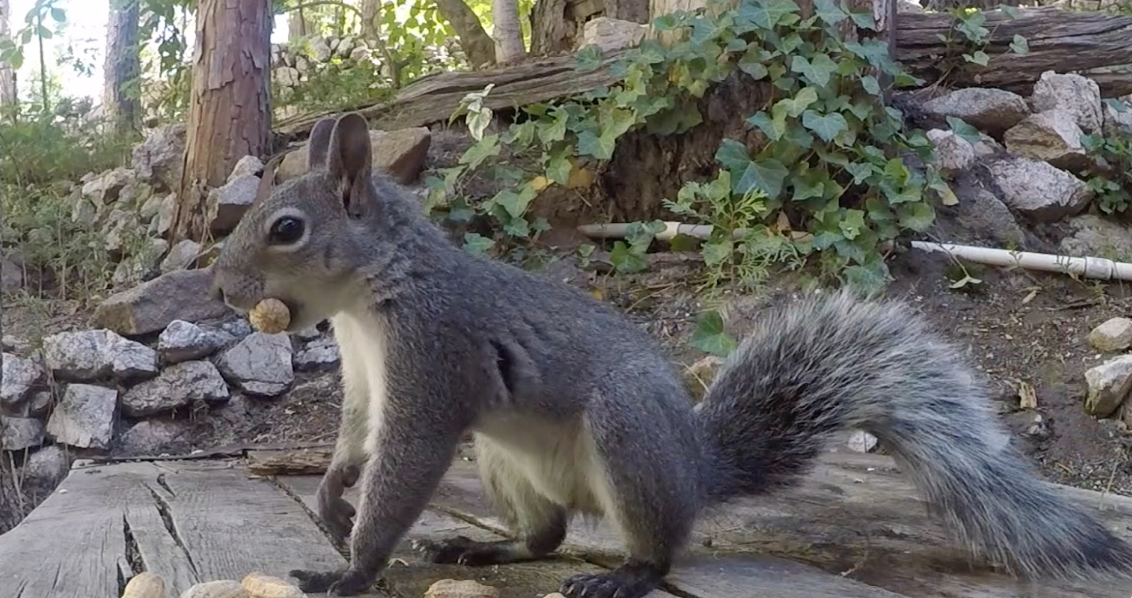
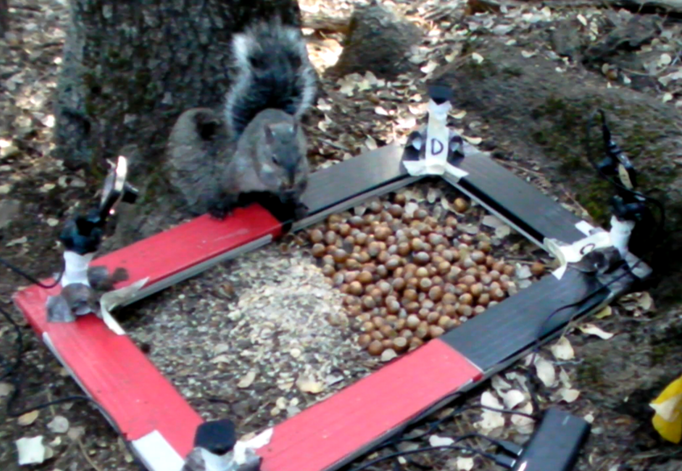
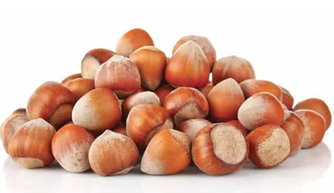
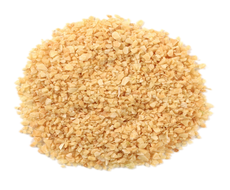
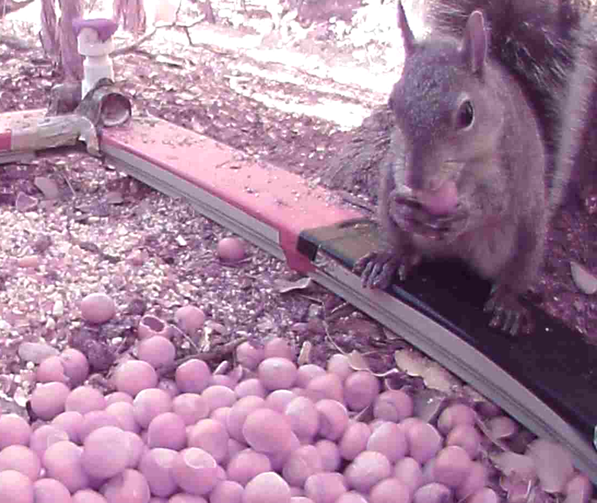
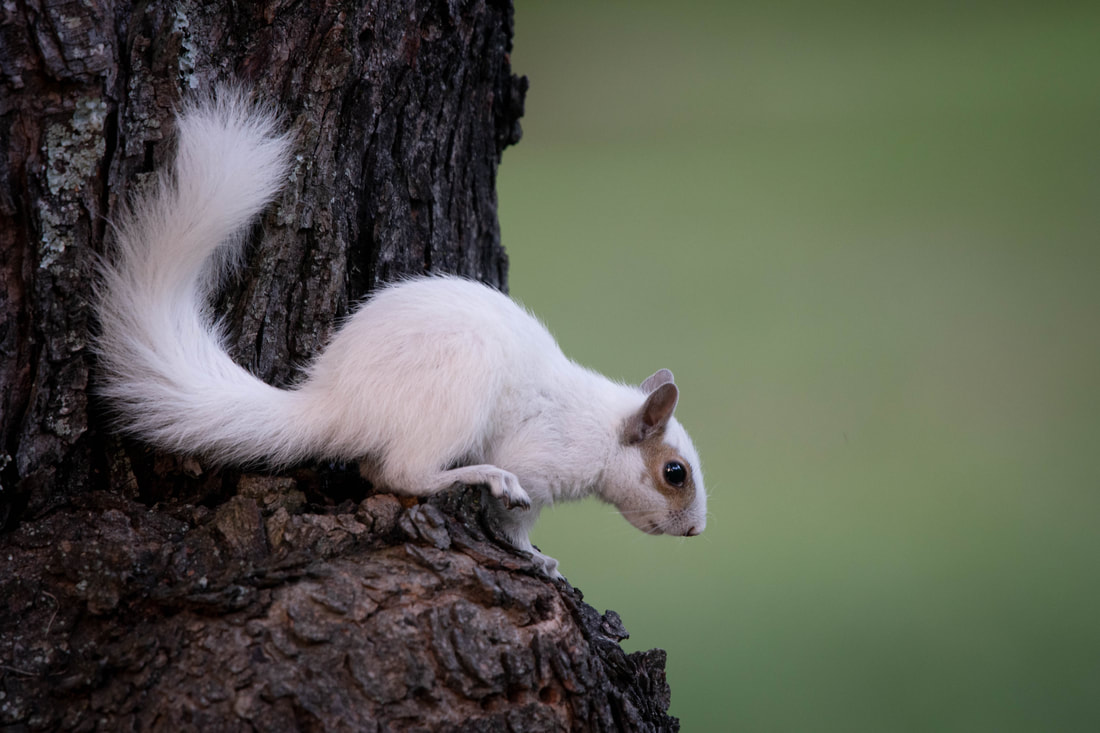
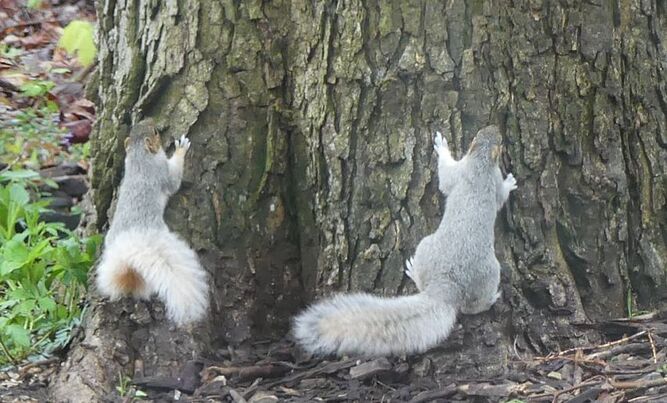
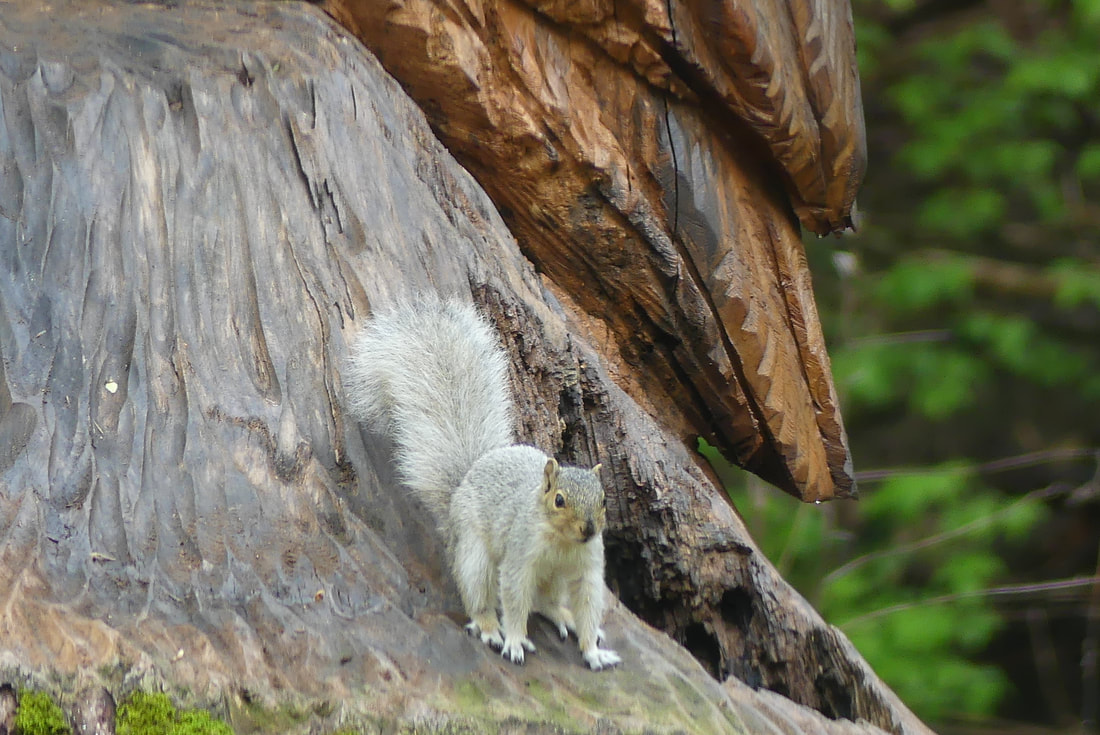
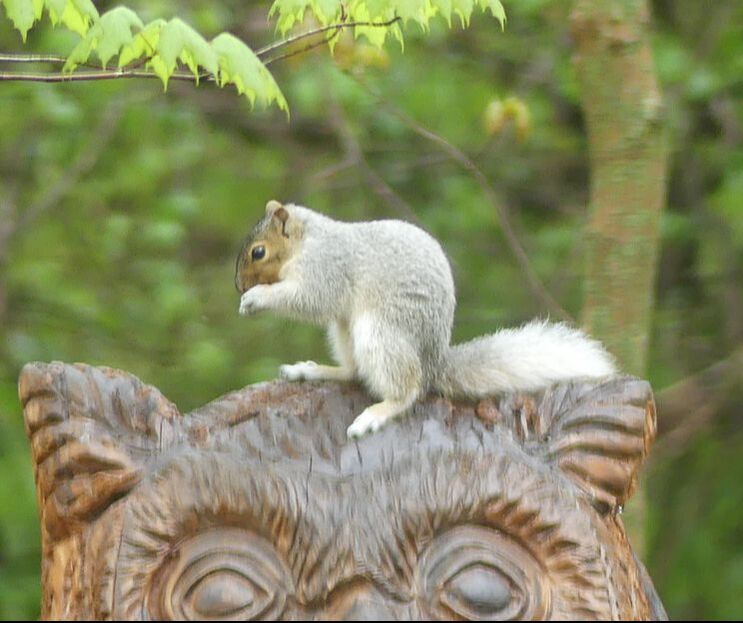
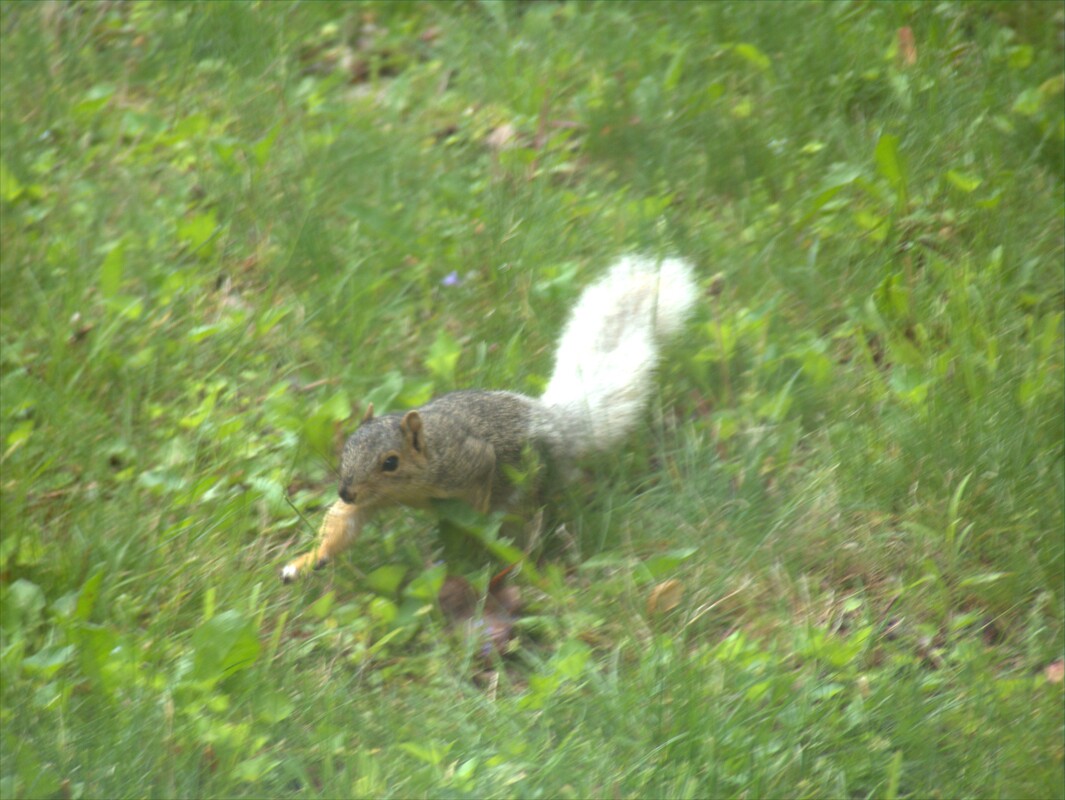
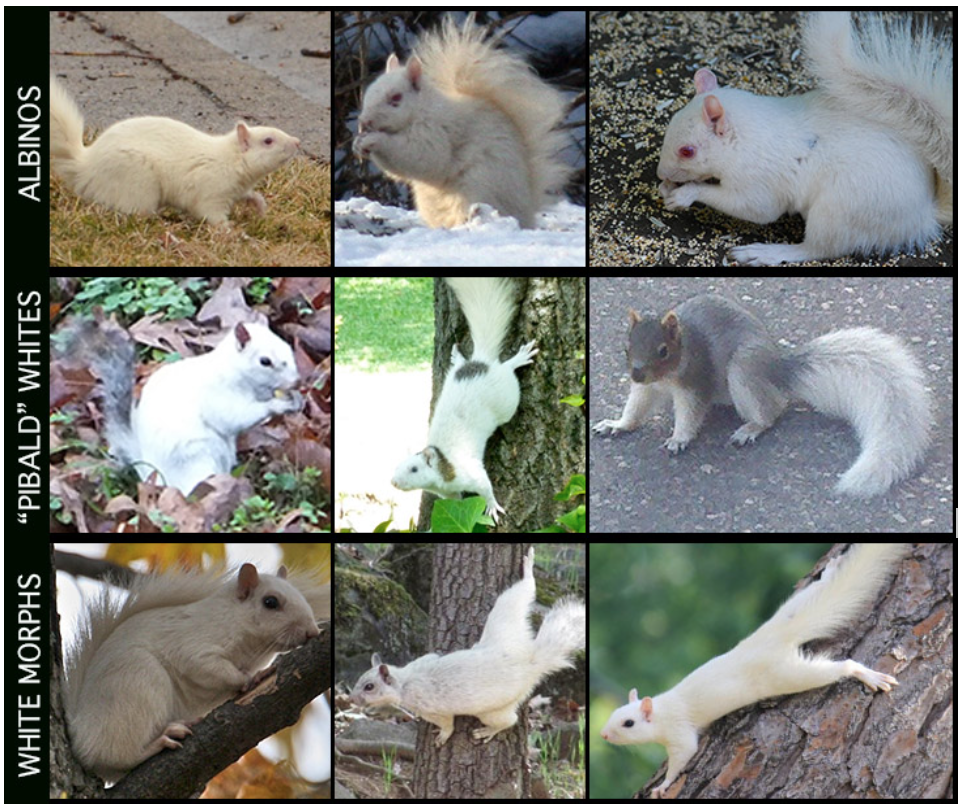
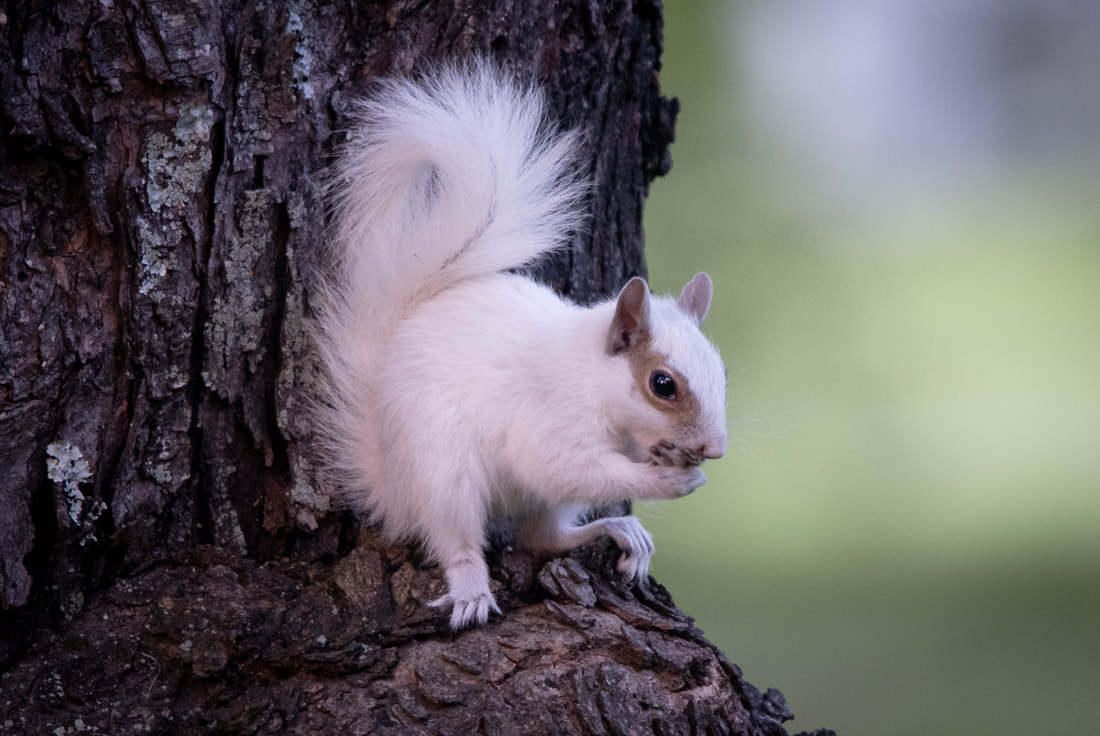
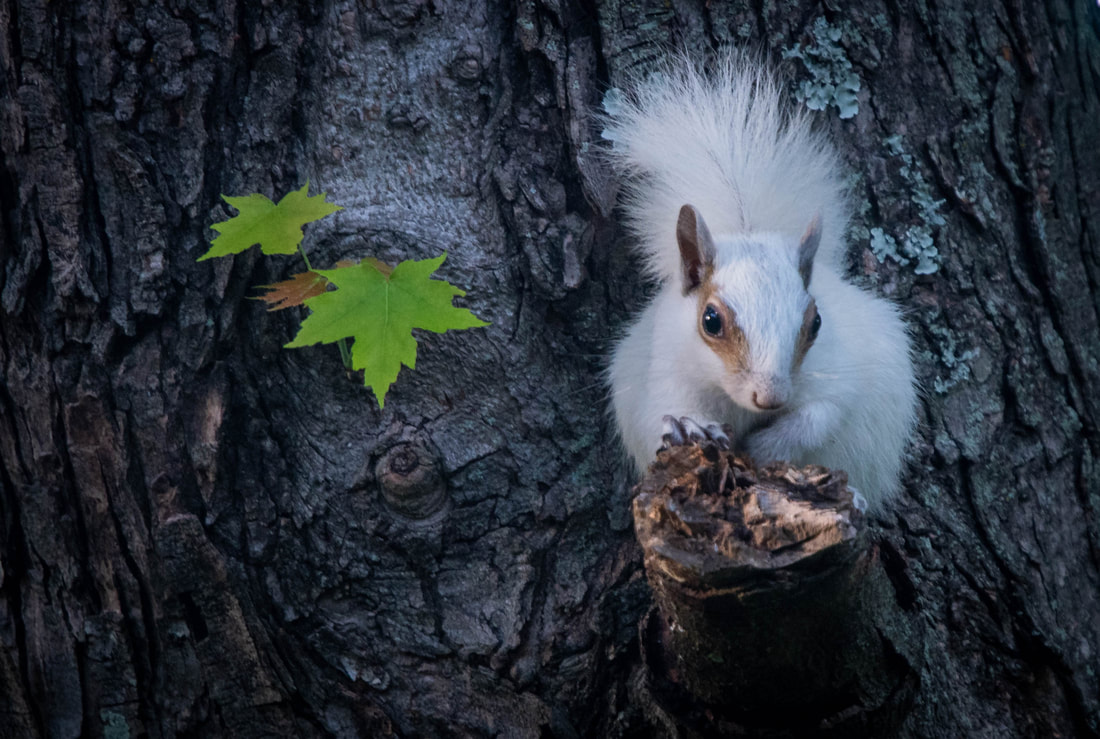
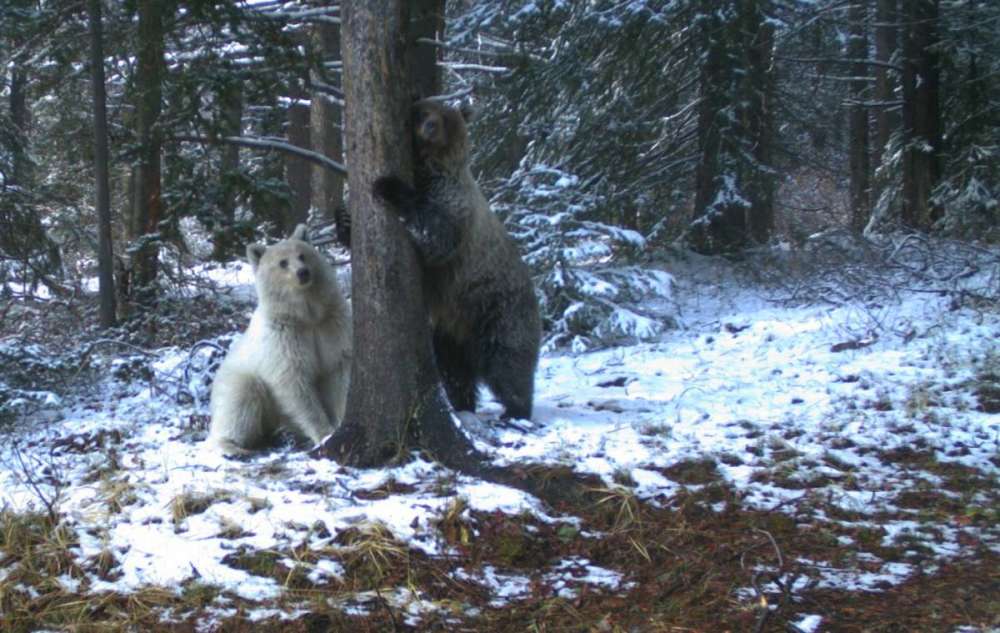
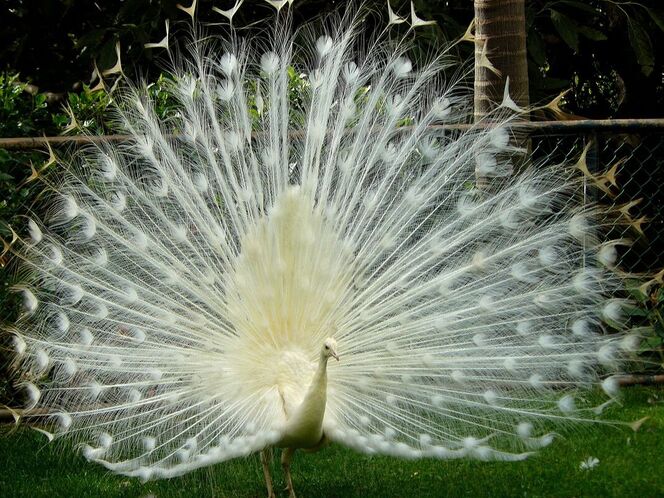
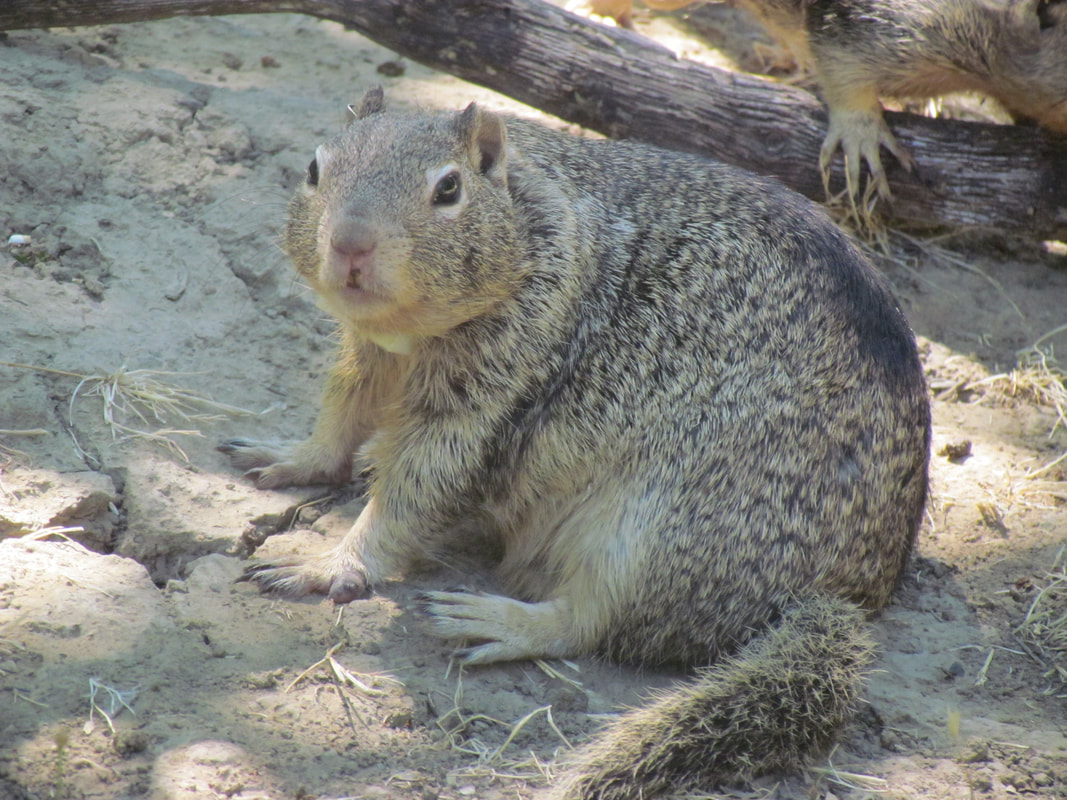
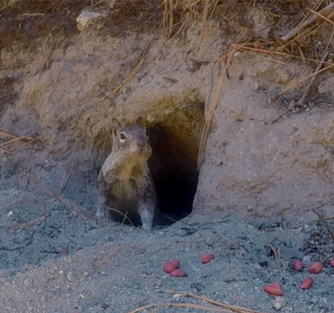
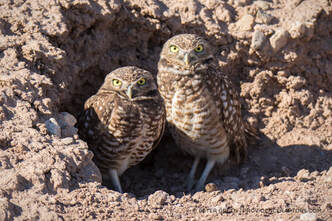
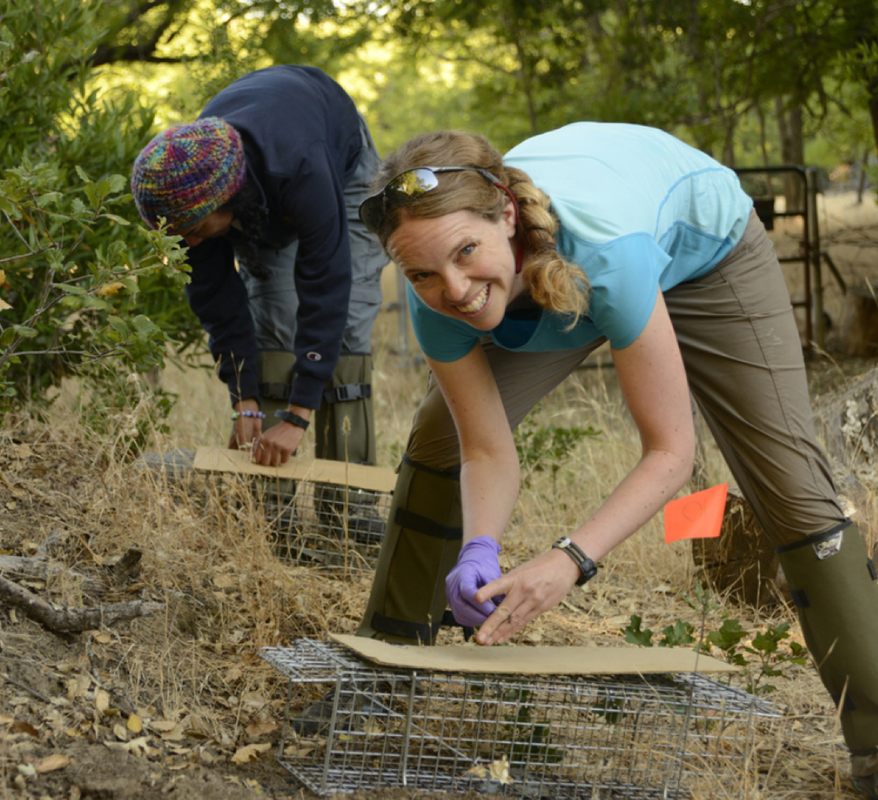
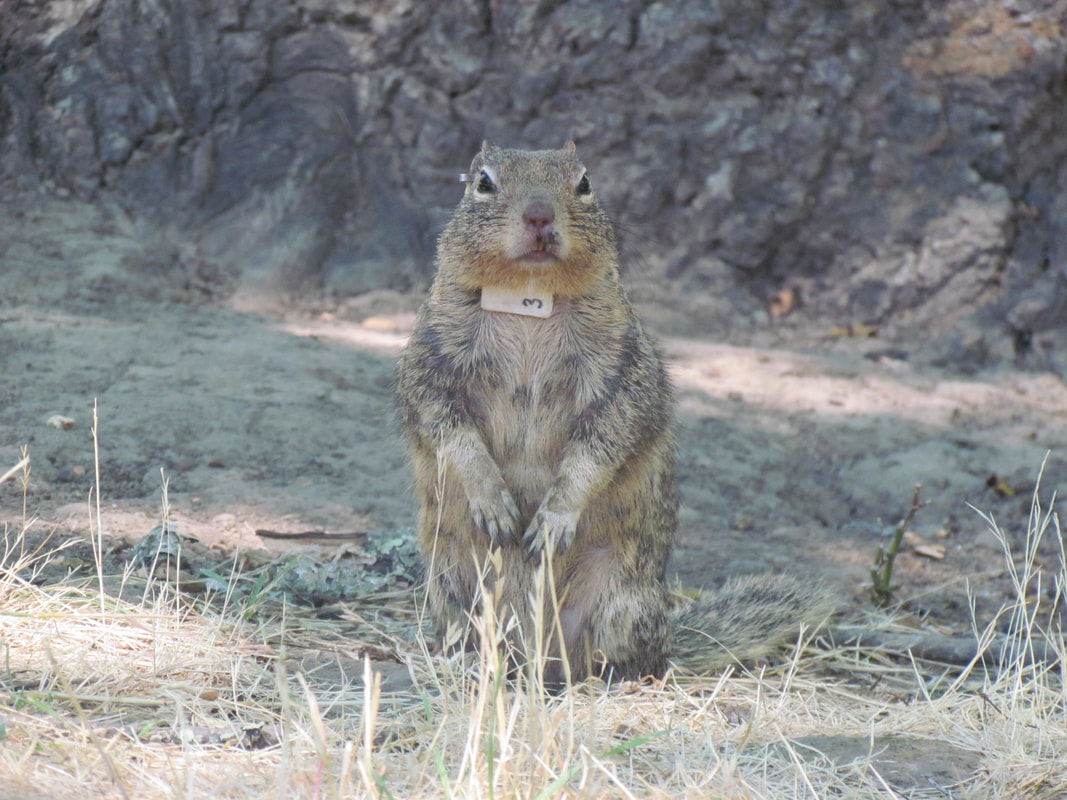
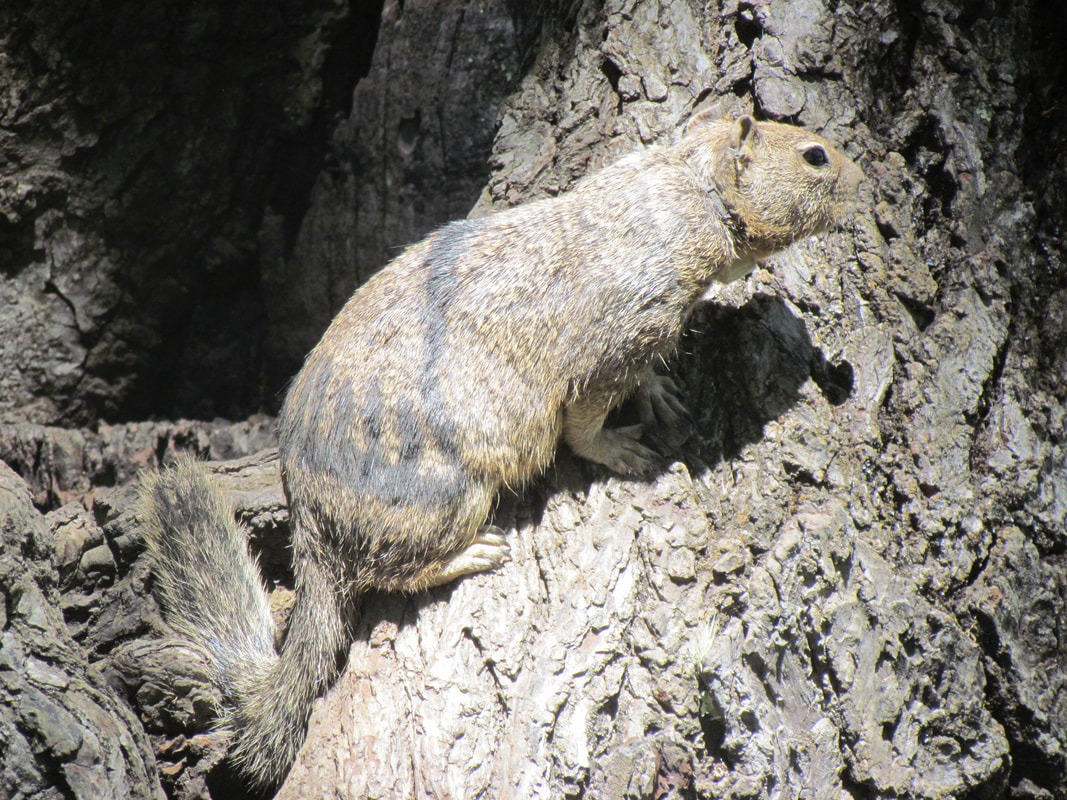
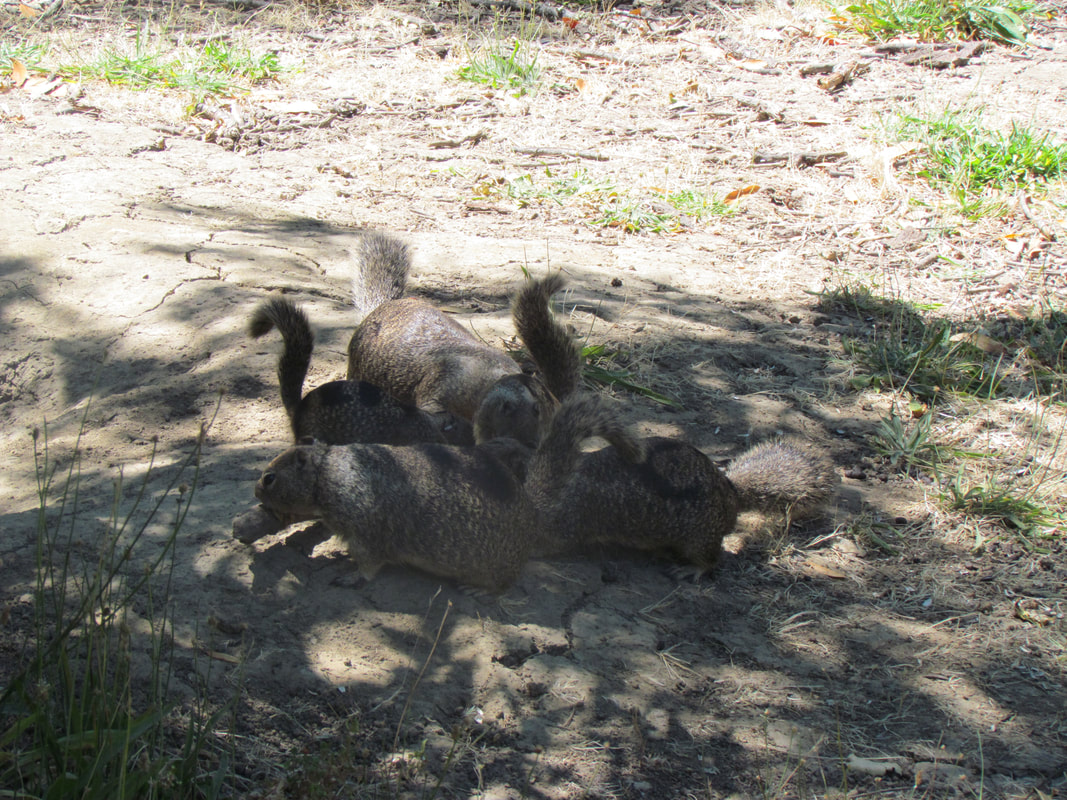
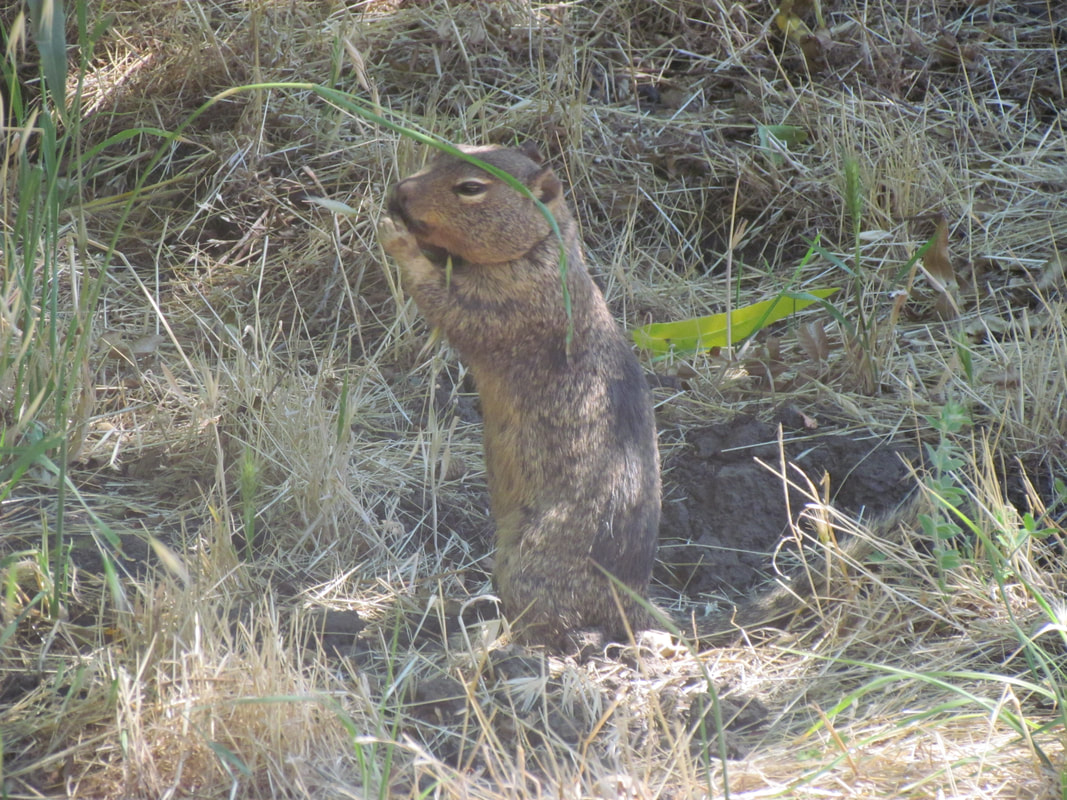
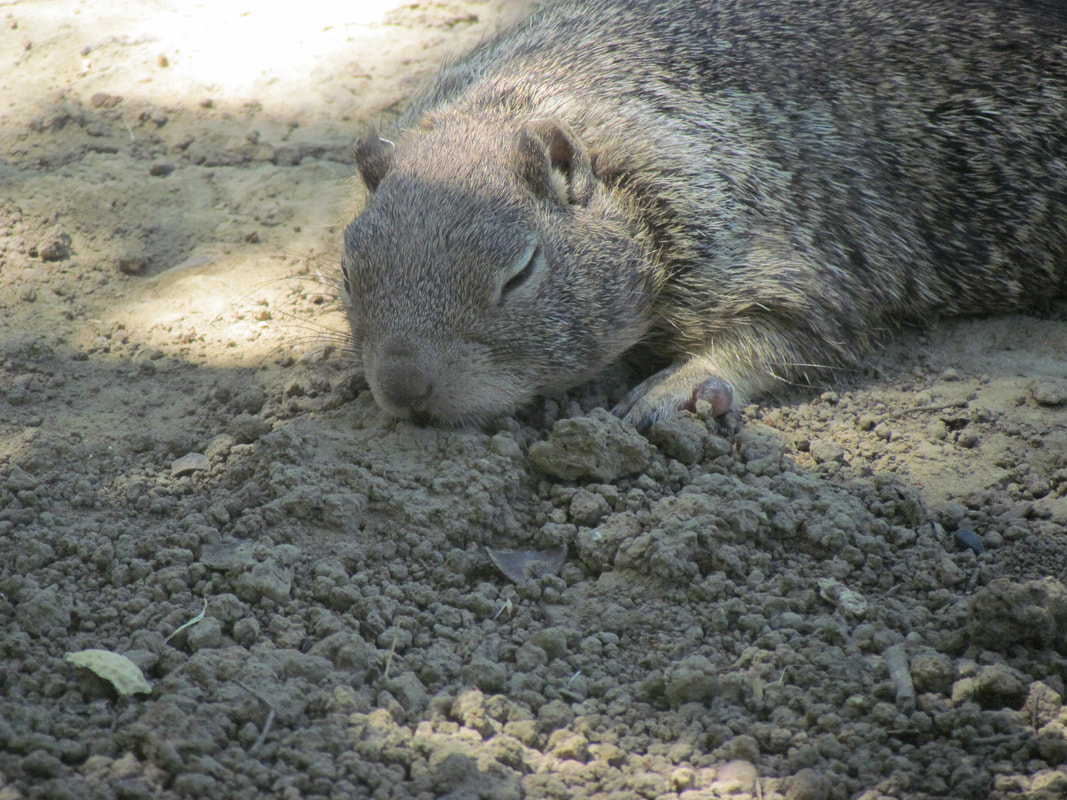
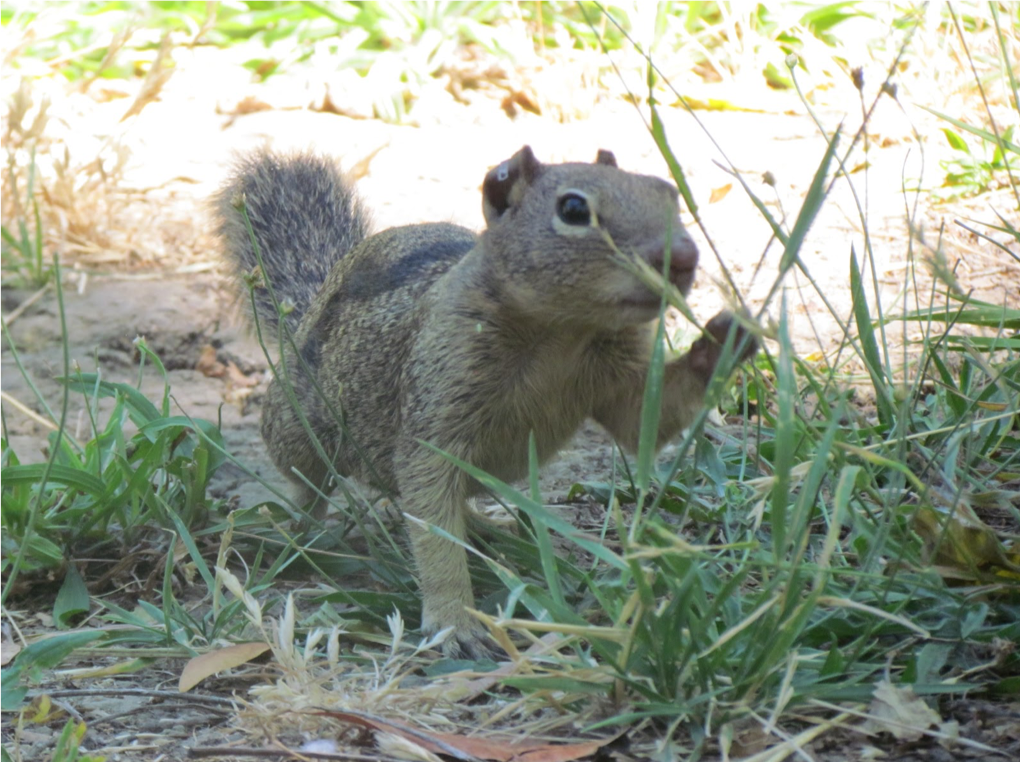
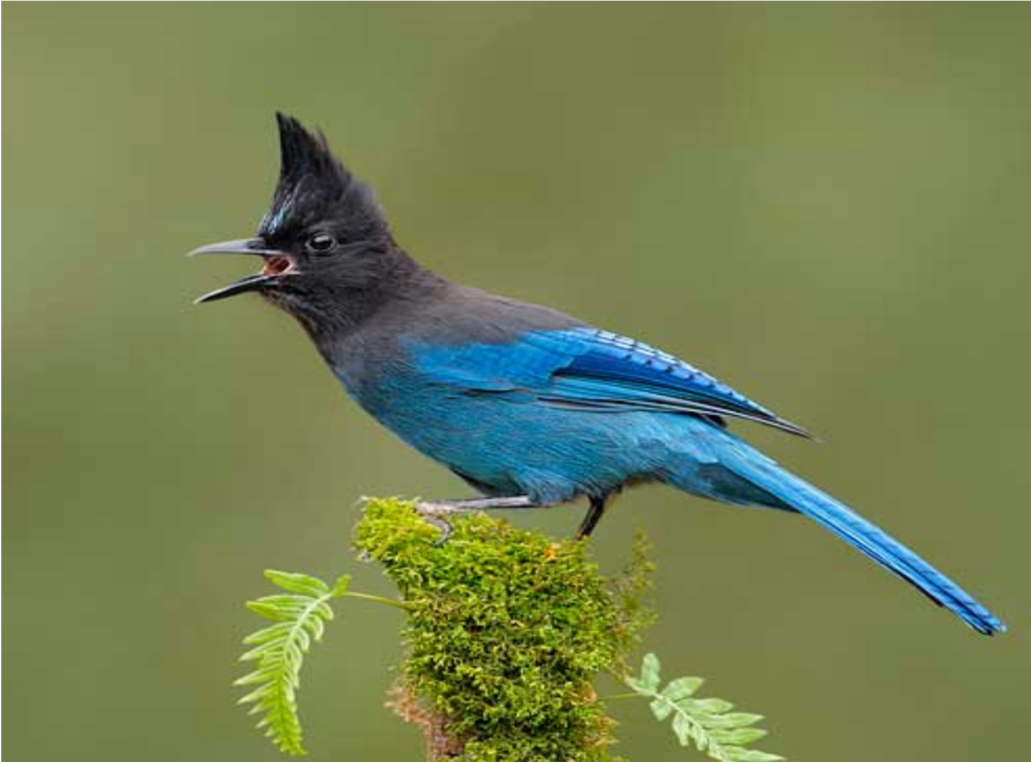
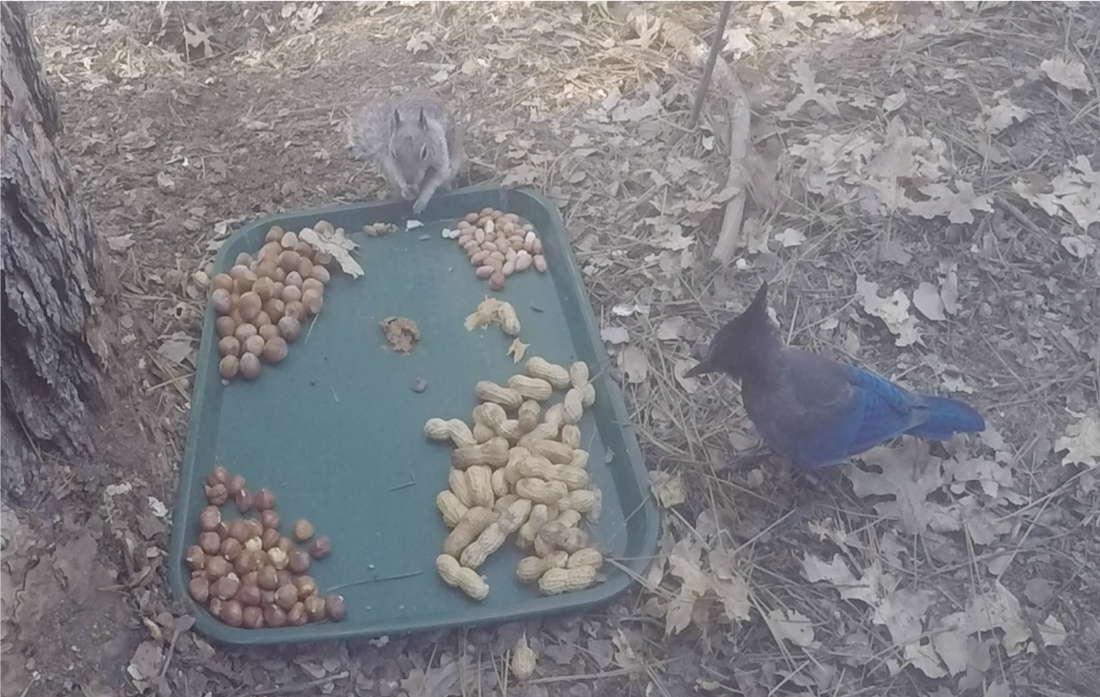
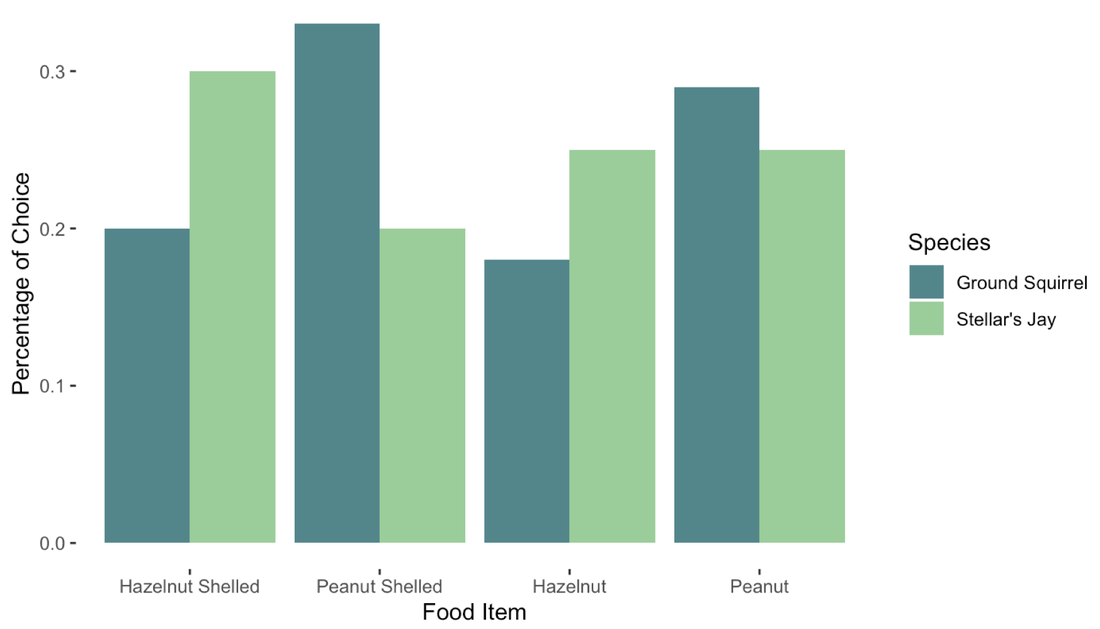
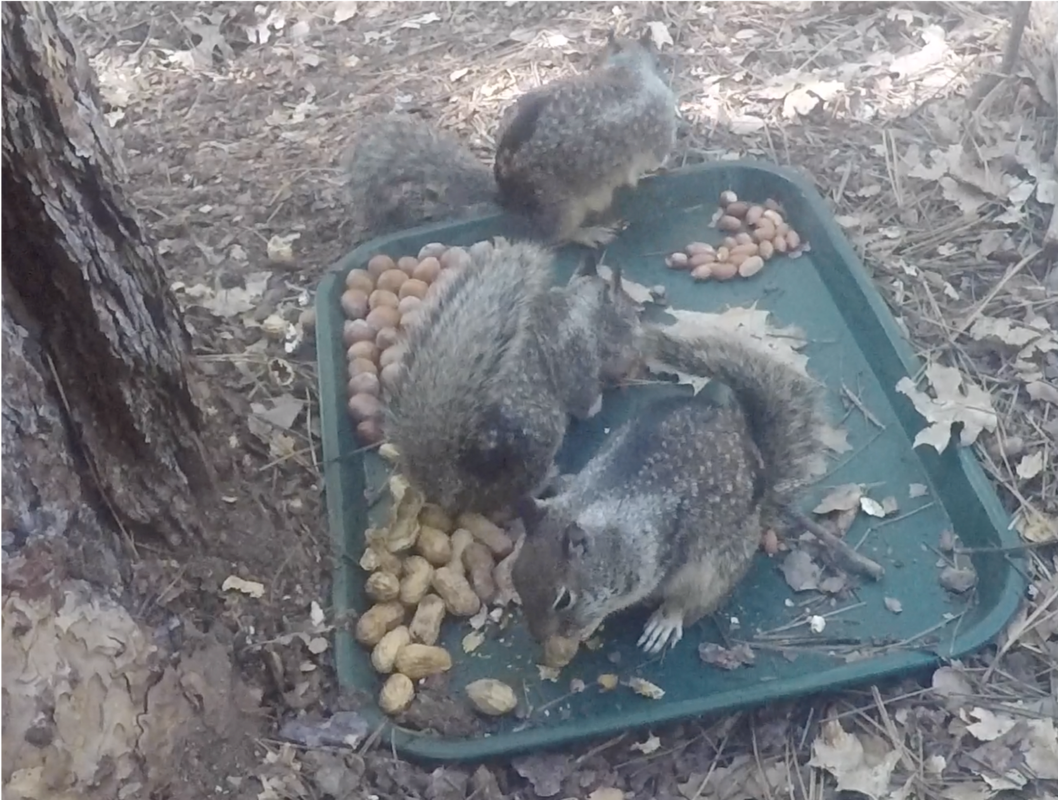
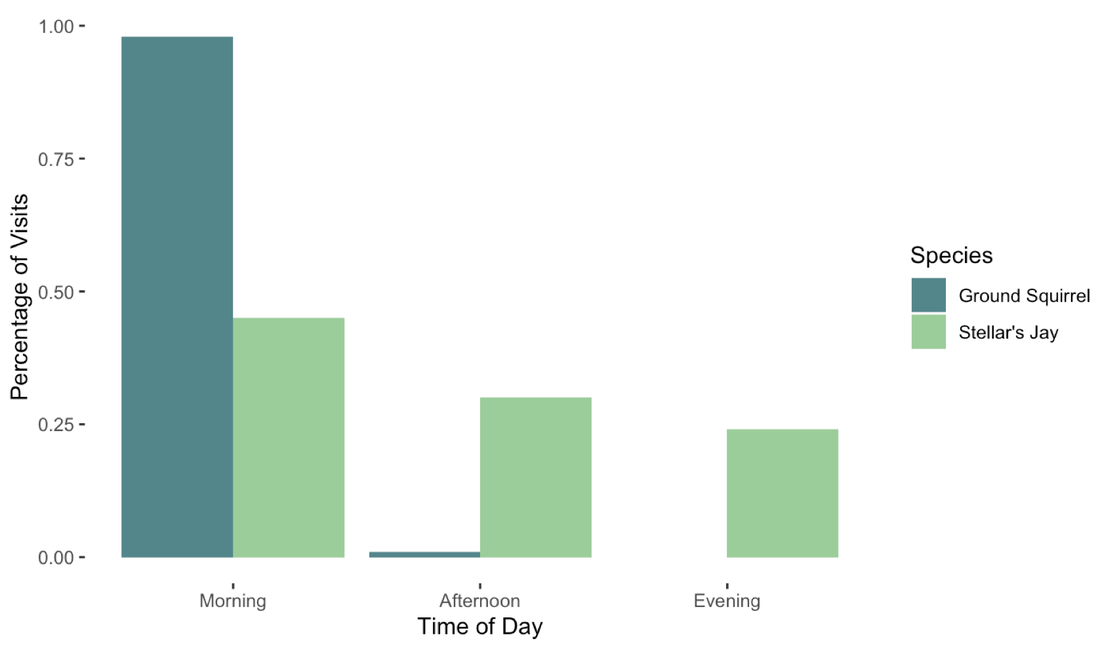
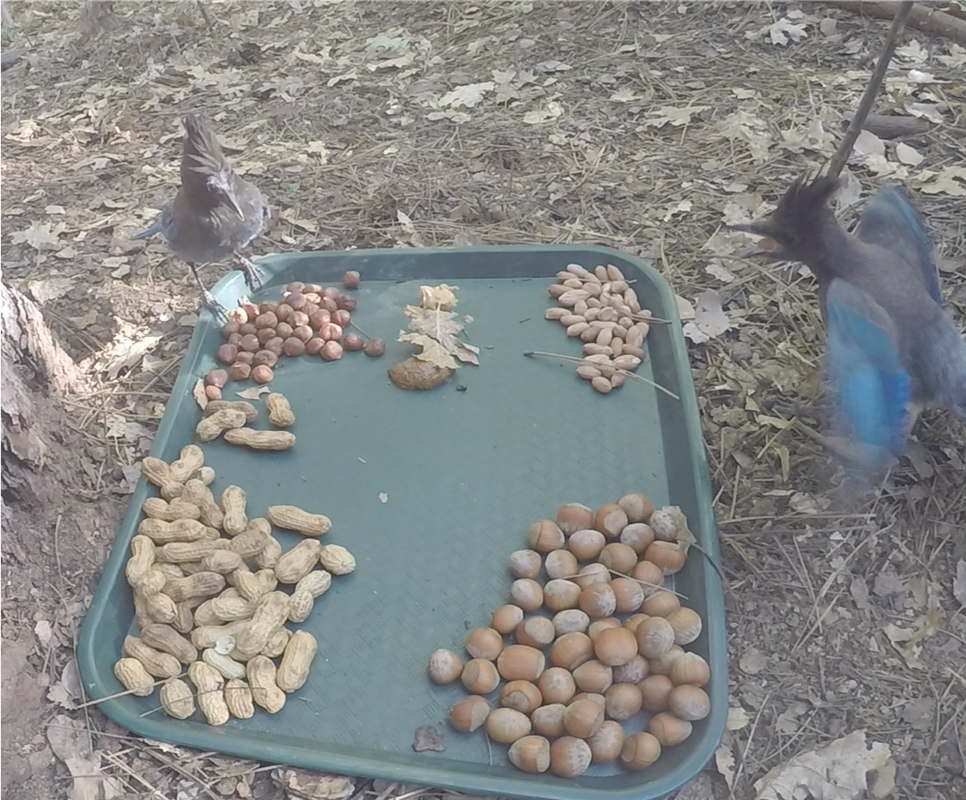
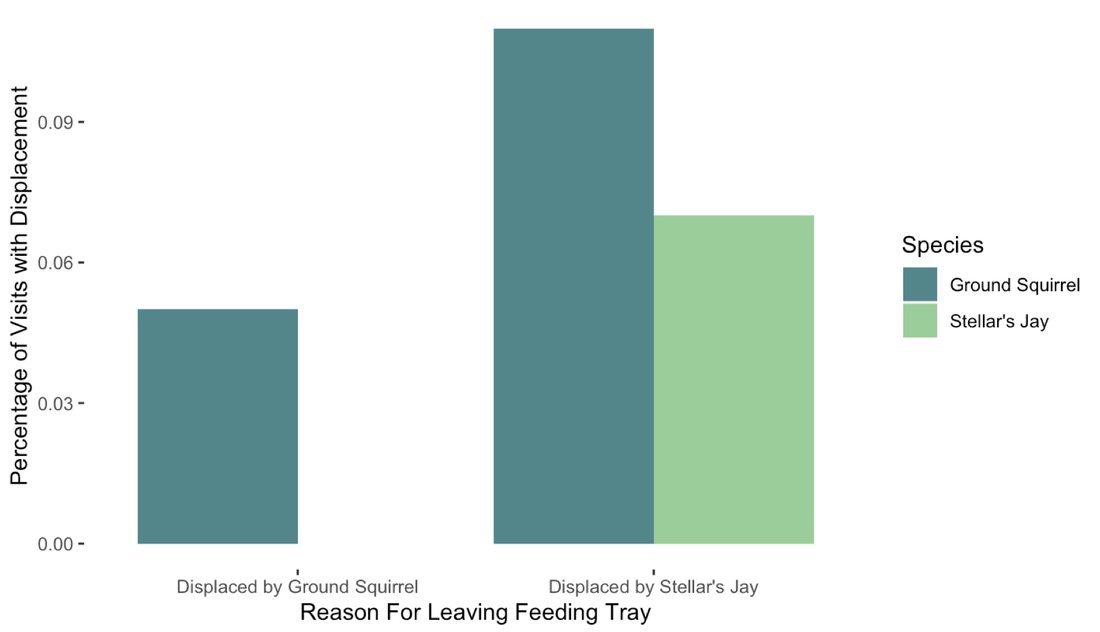
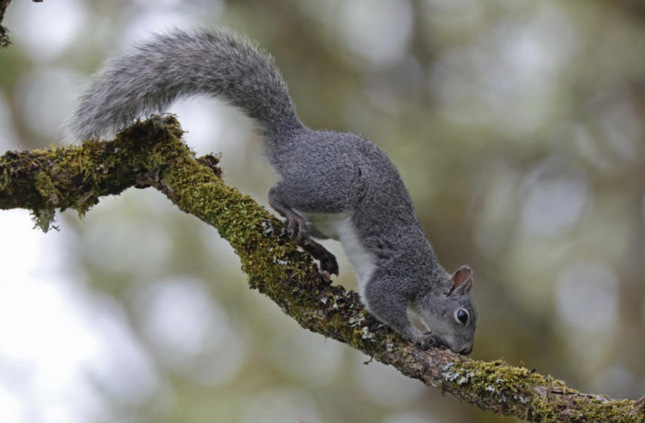
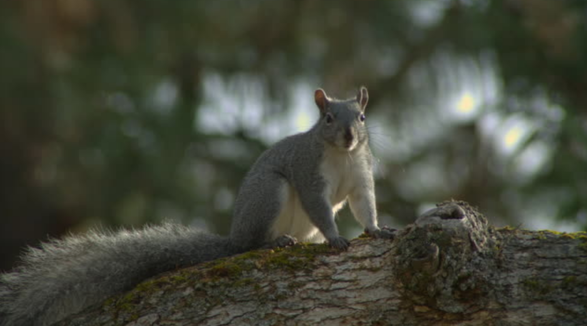
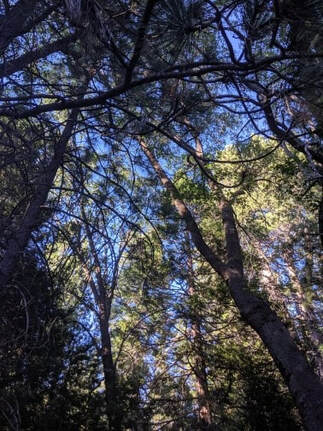
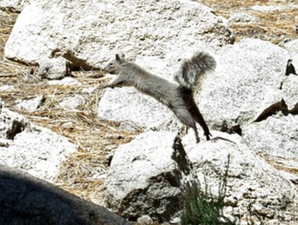
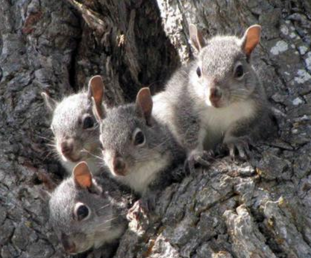
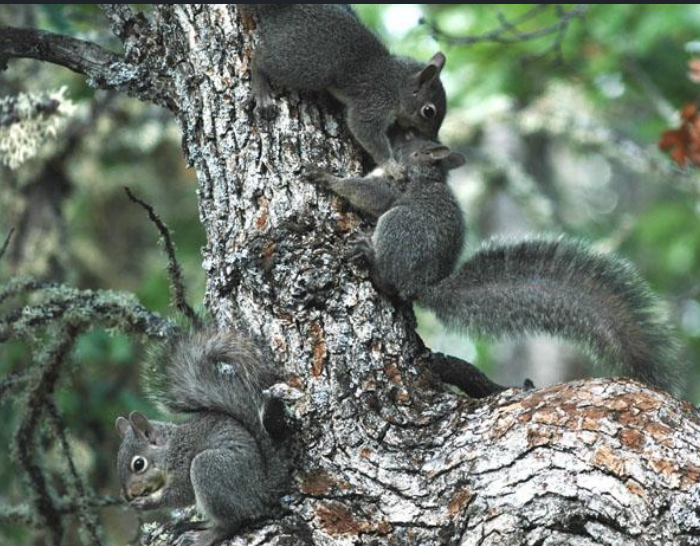
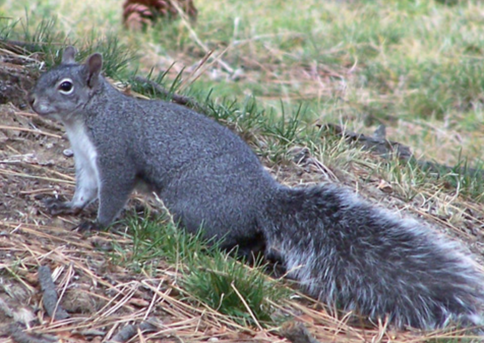
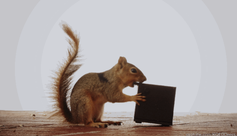


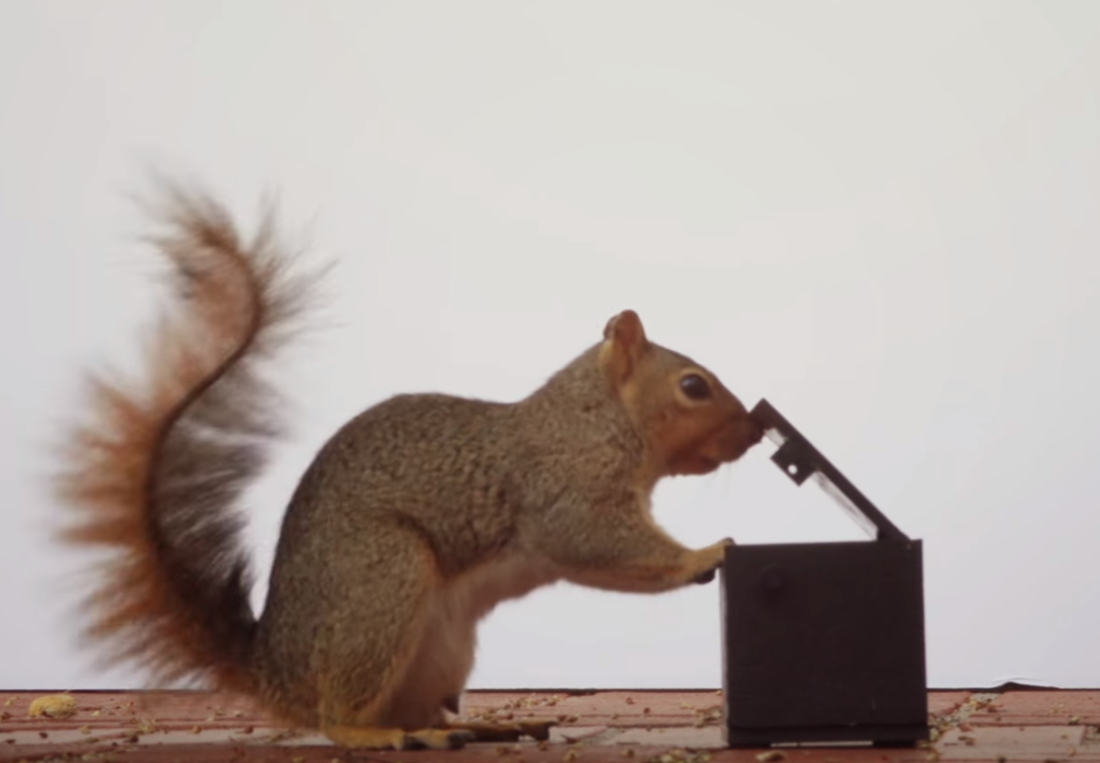
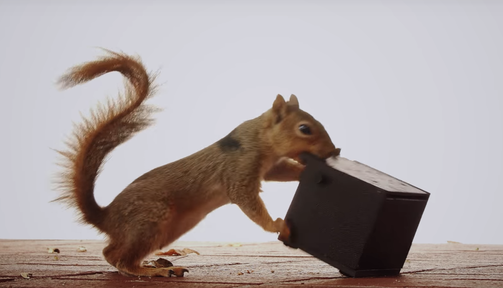
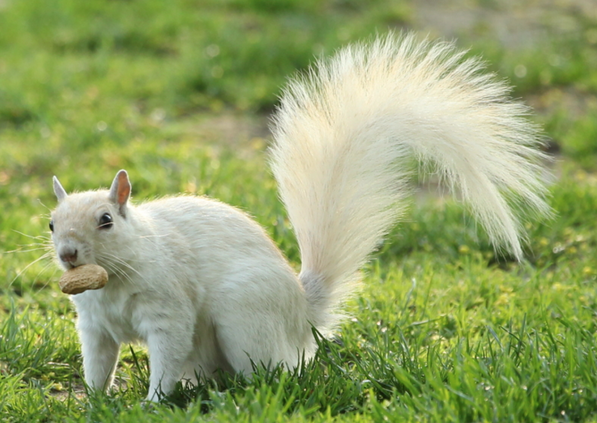
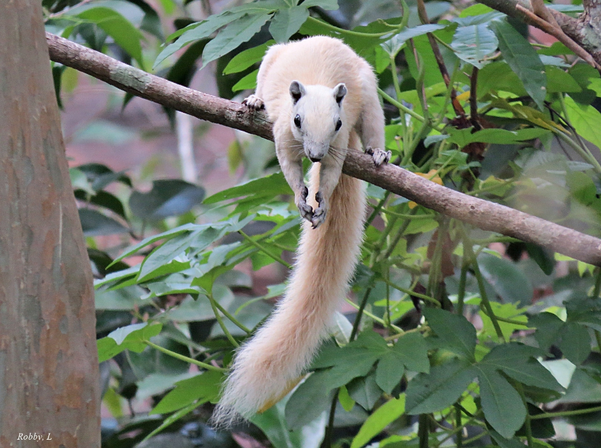
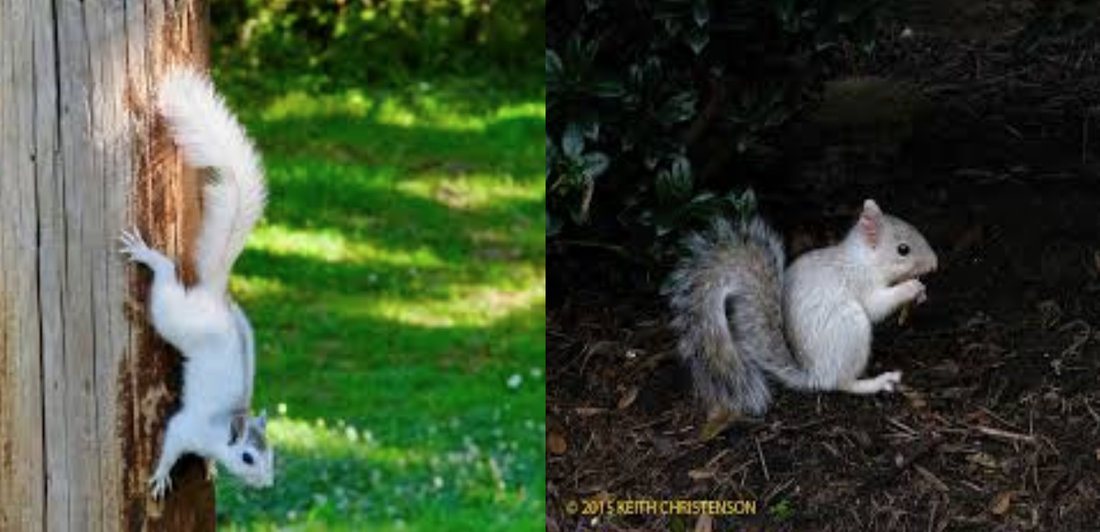
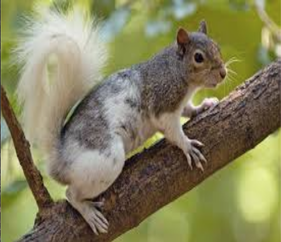
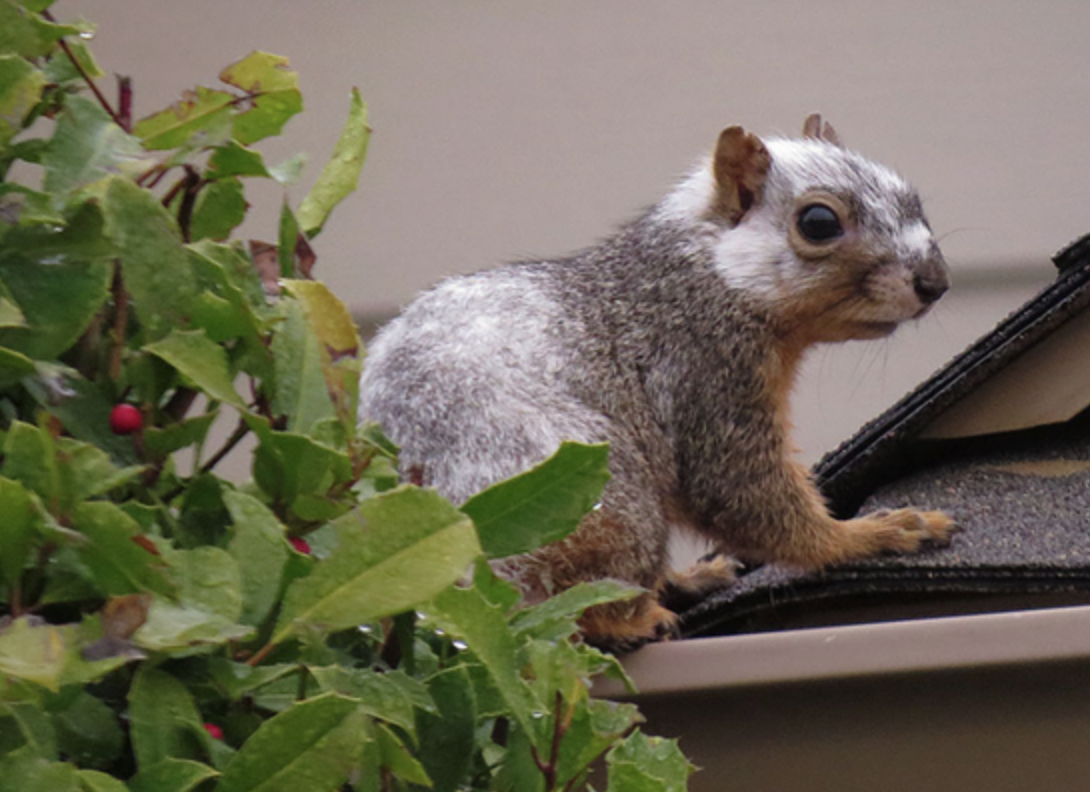
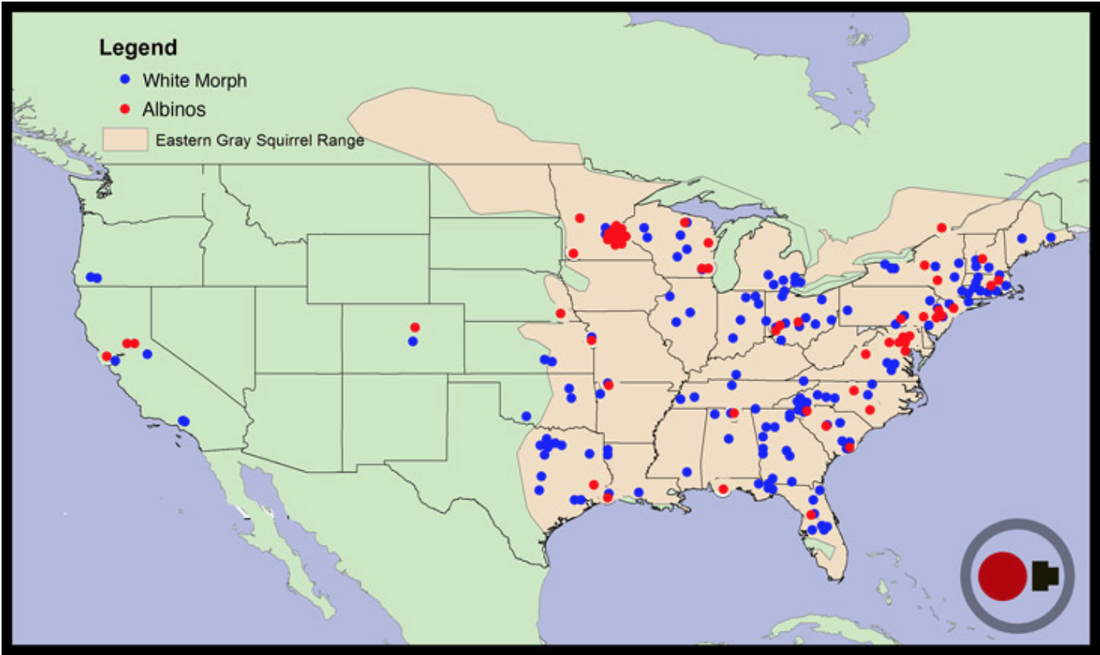
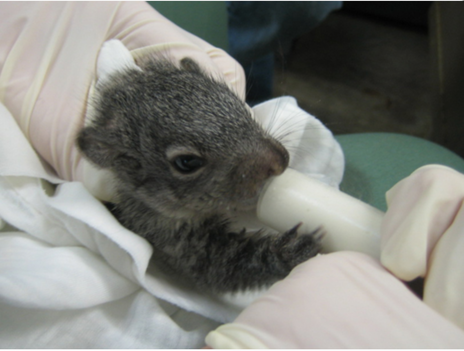
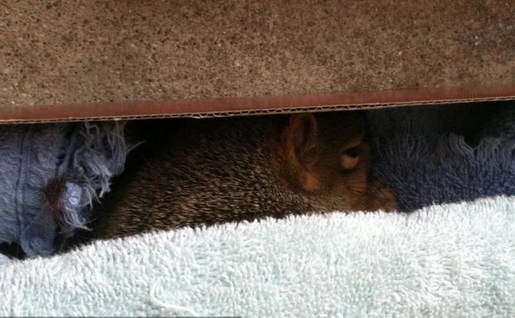
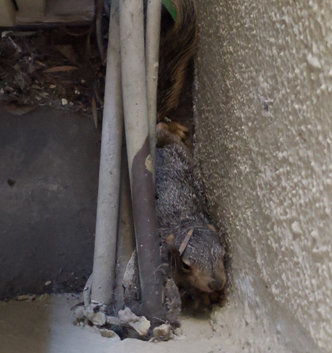
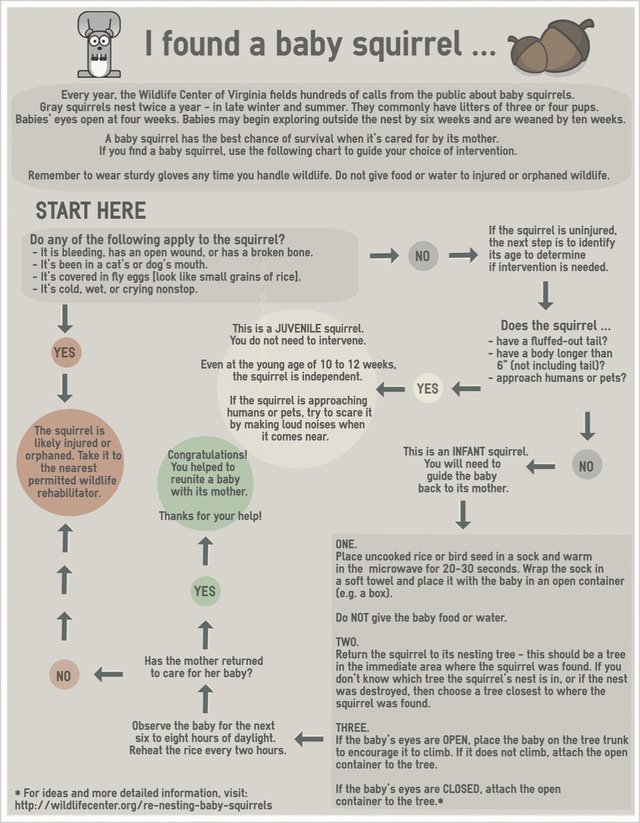
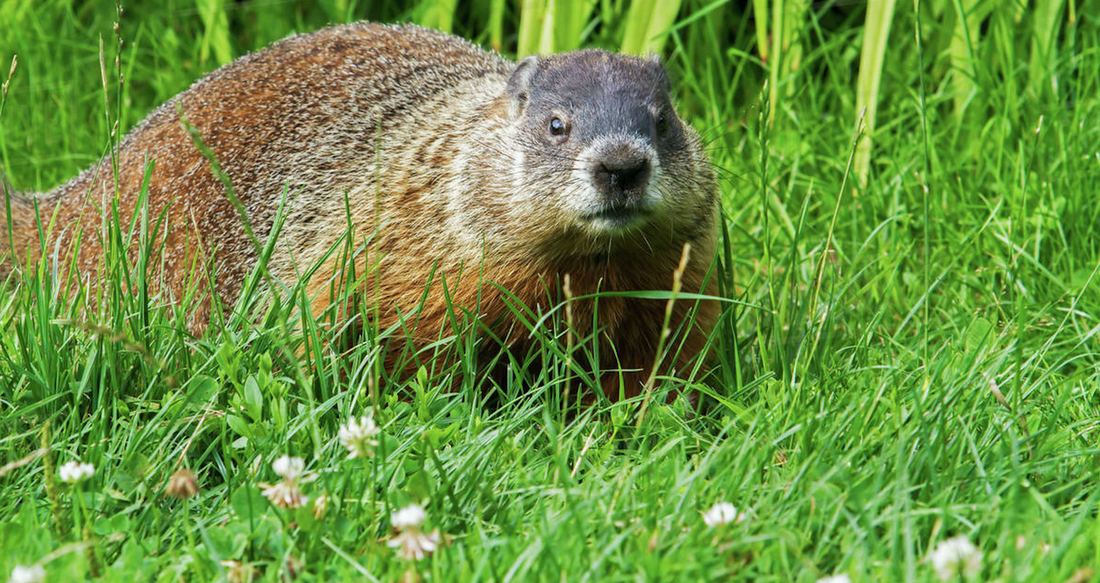
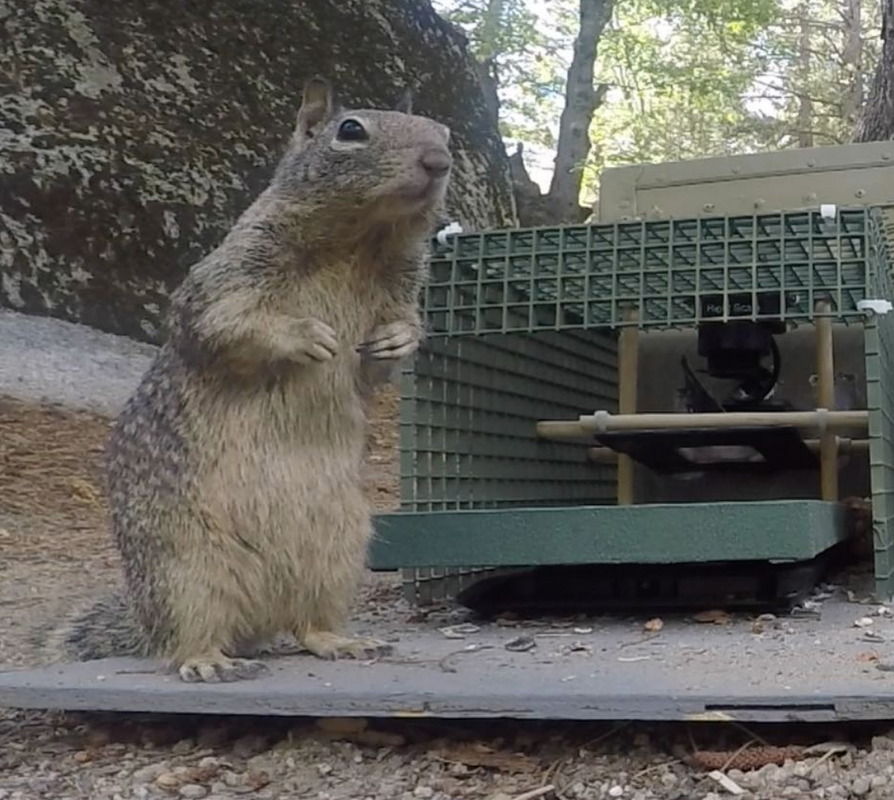
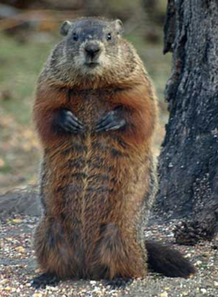
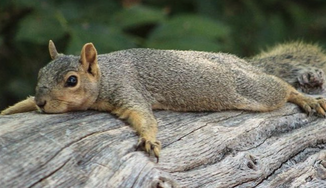
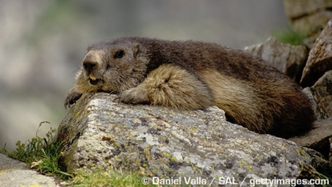
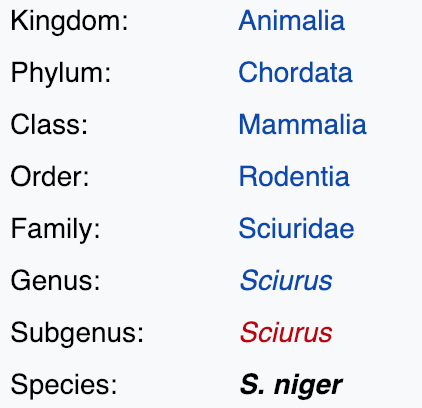
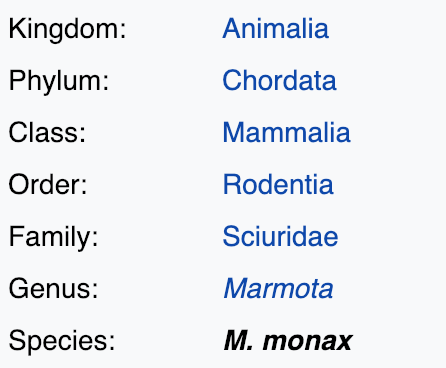
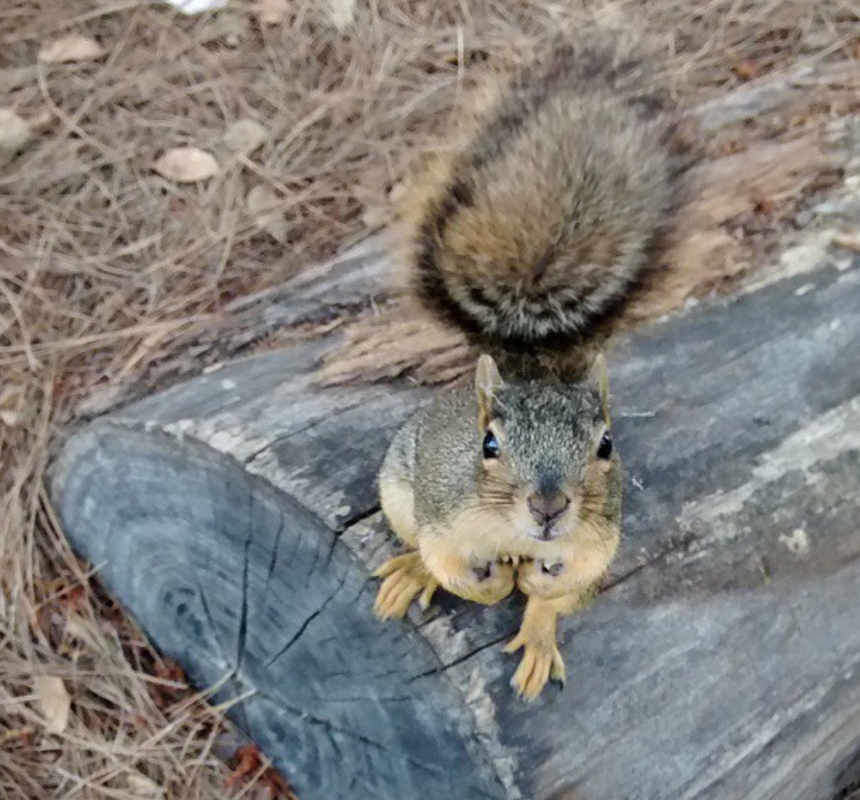
 RSS Feed
RSS Feed